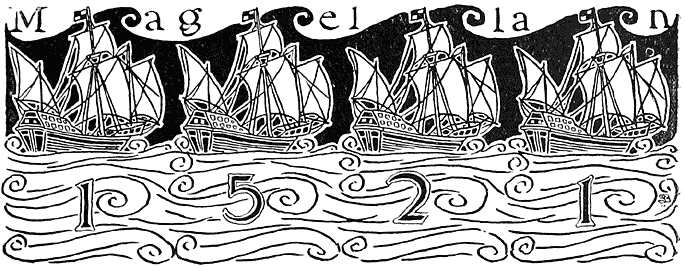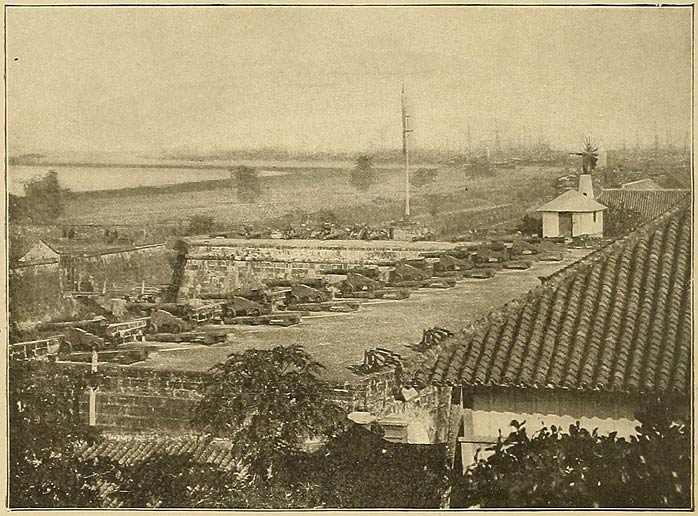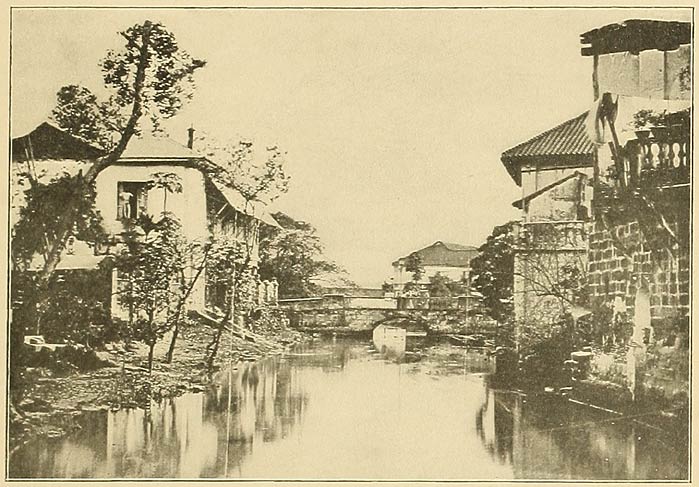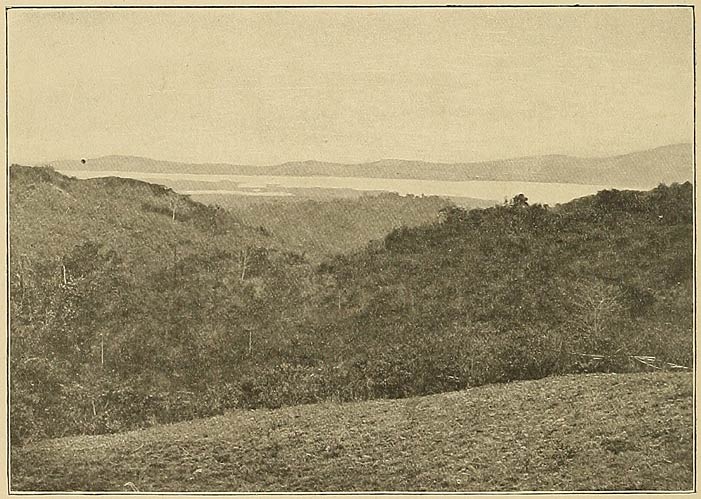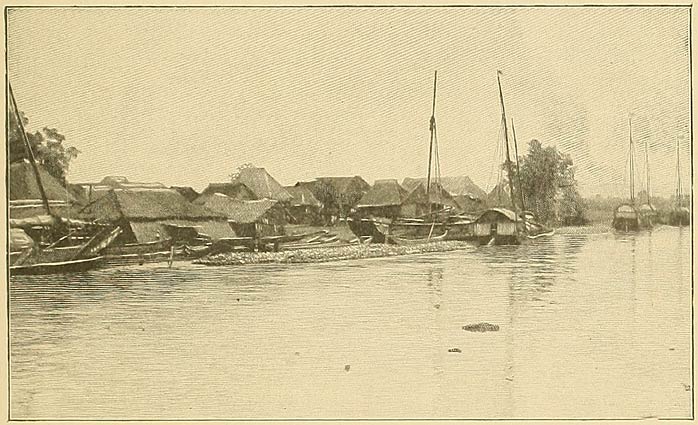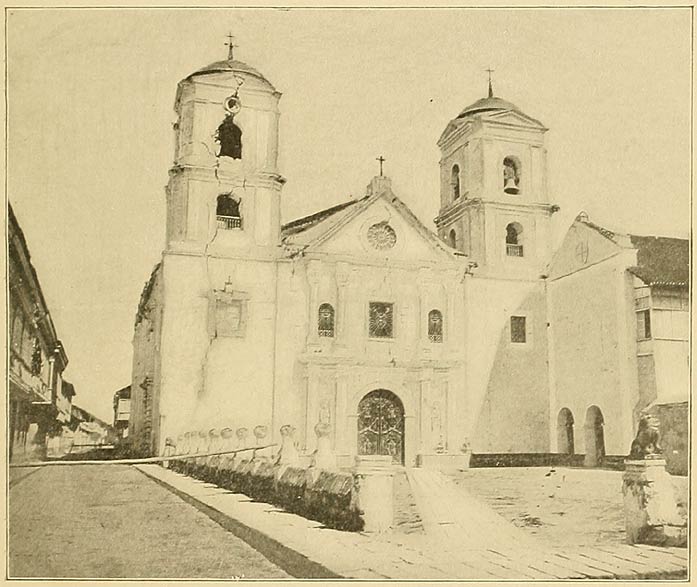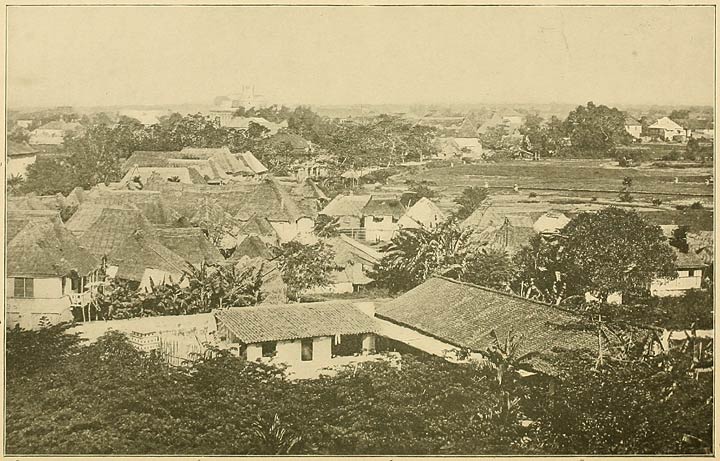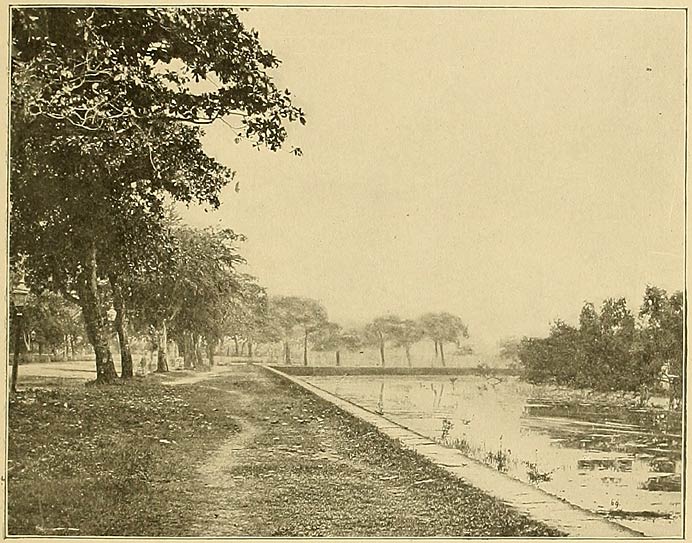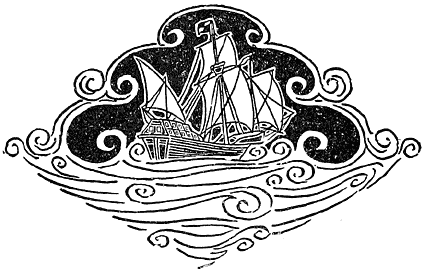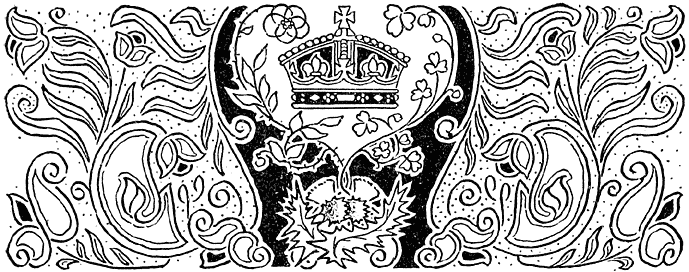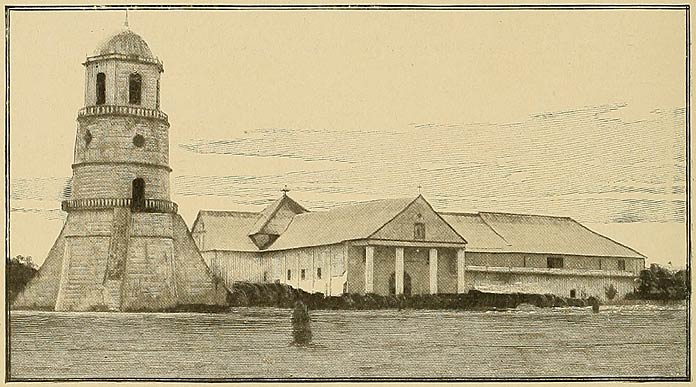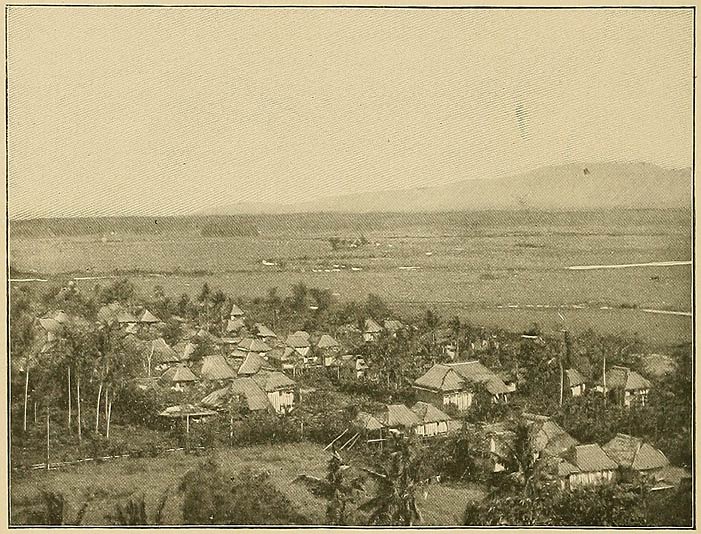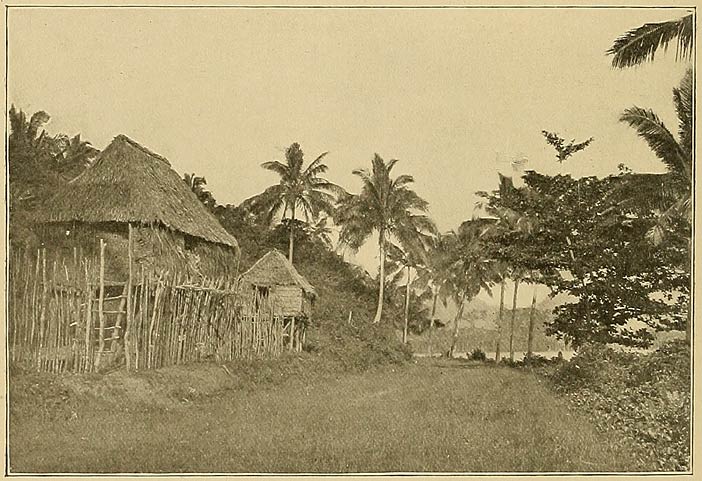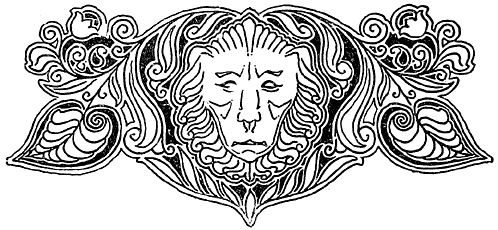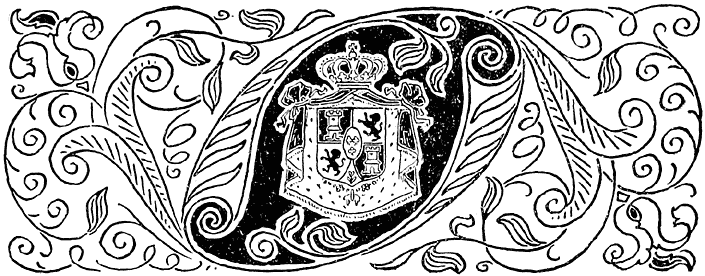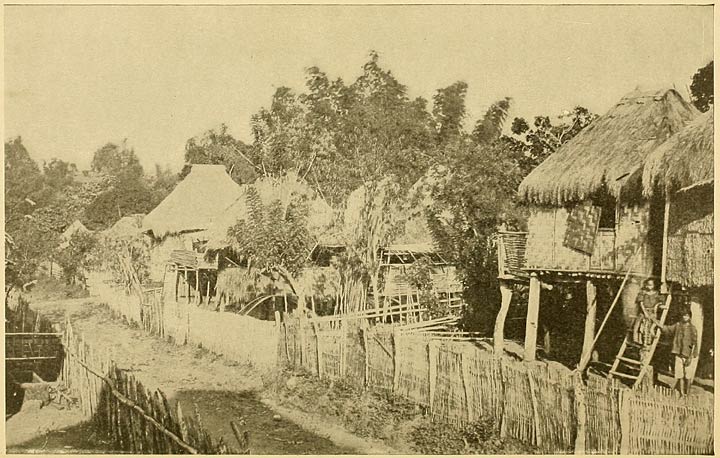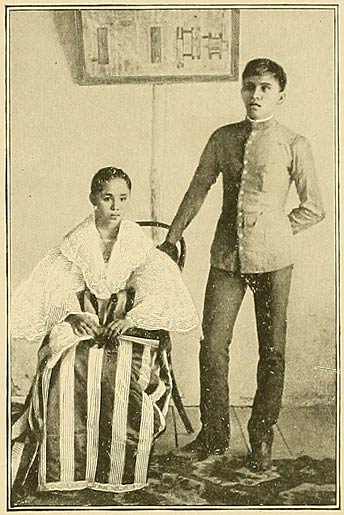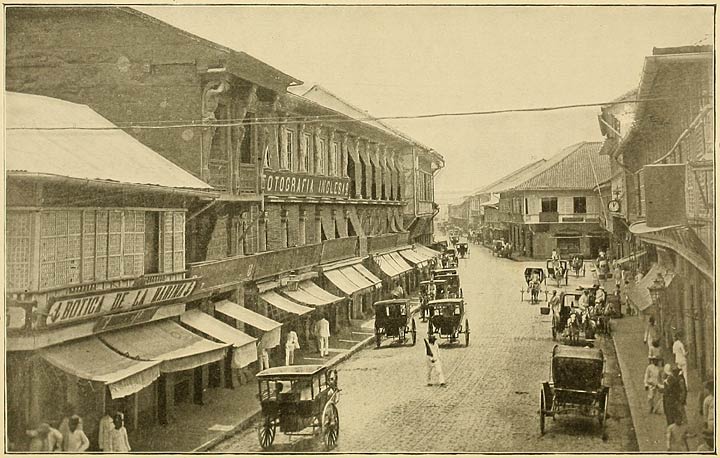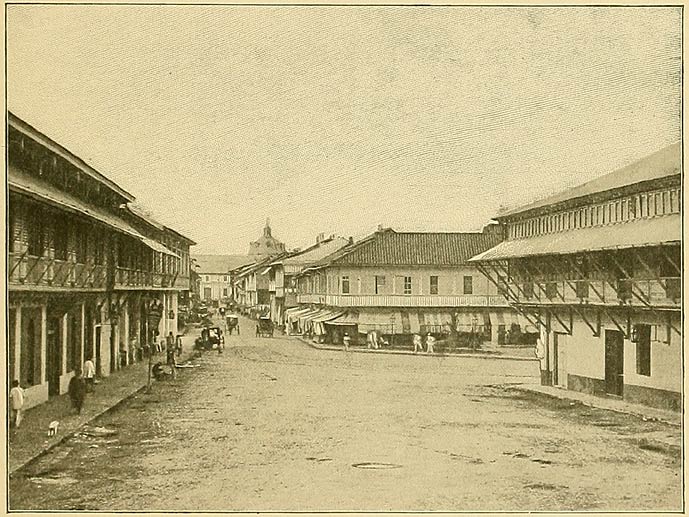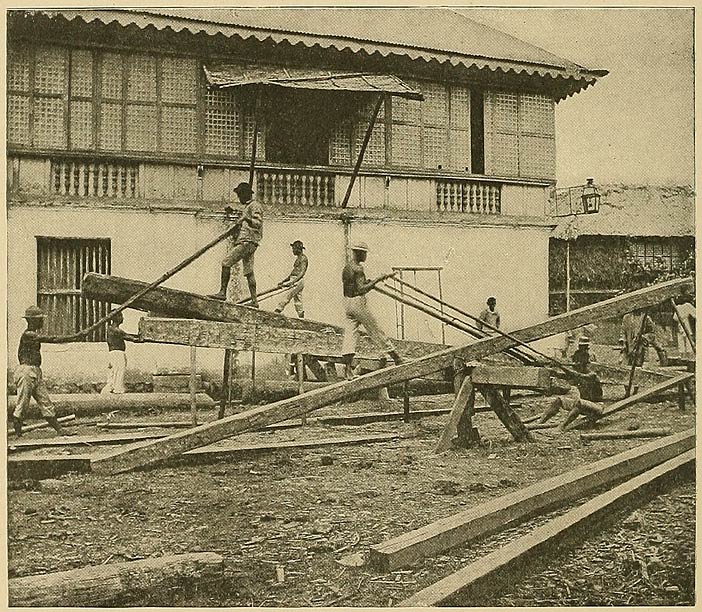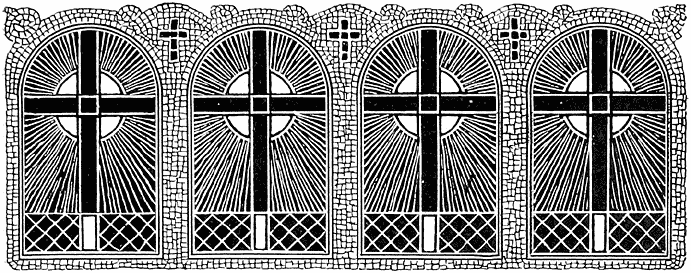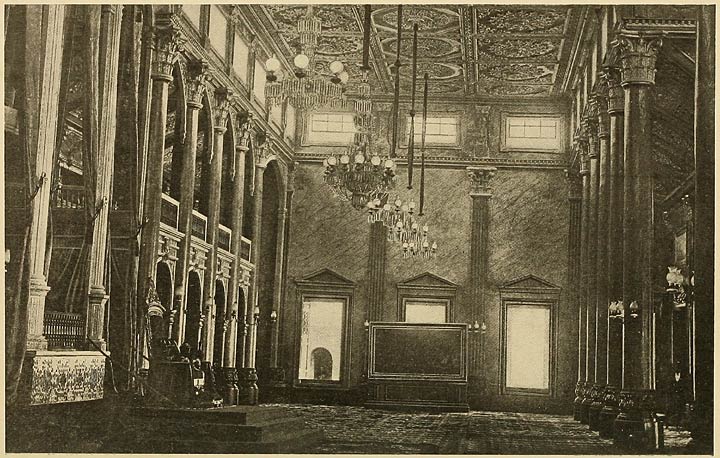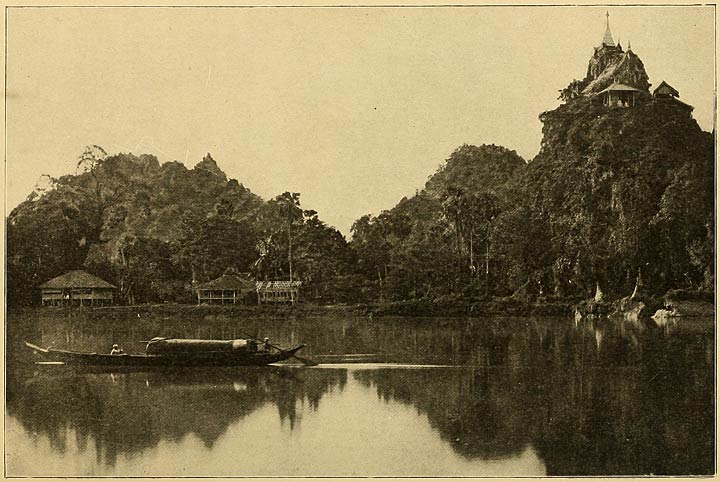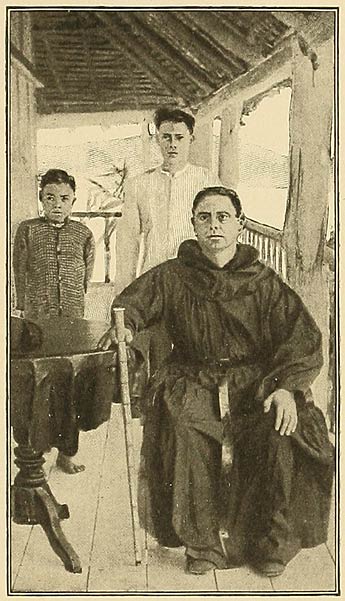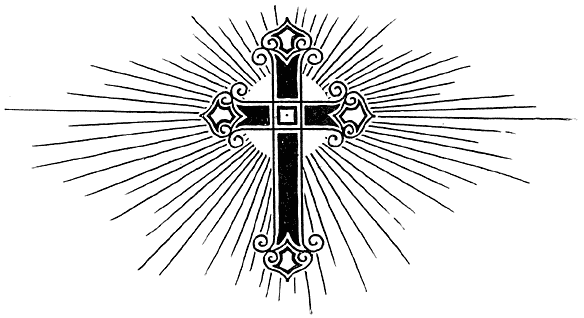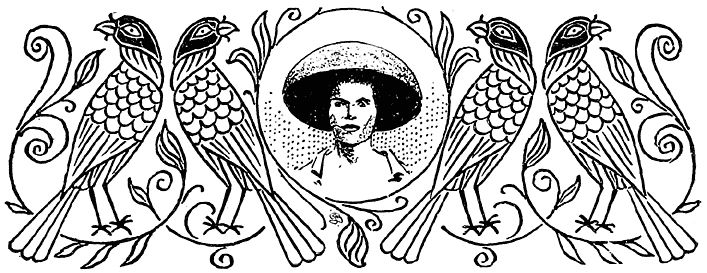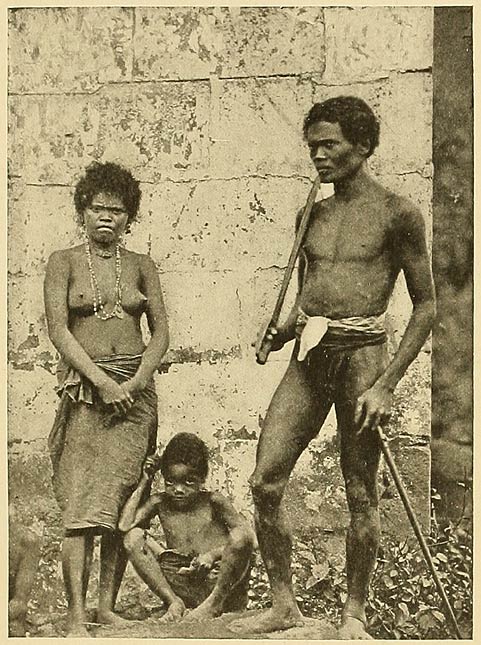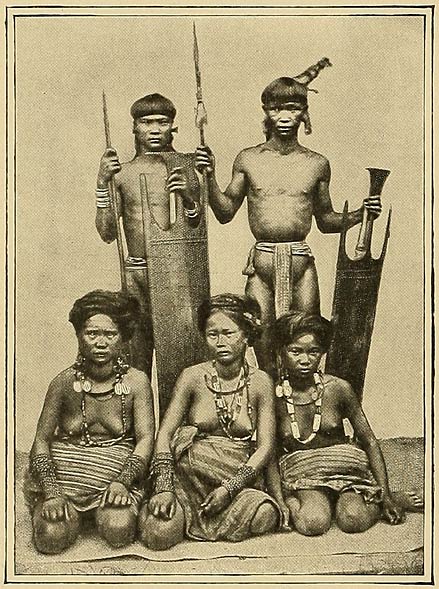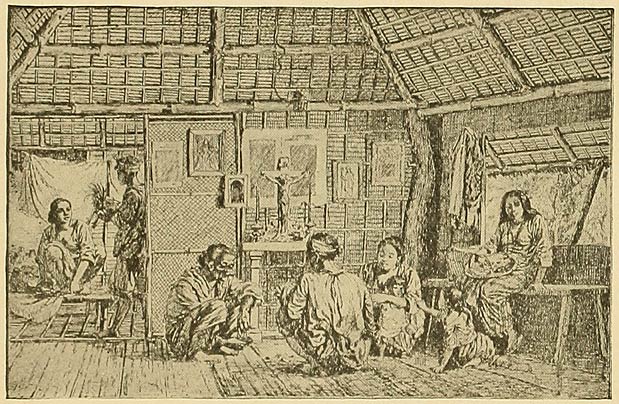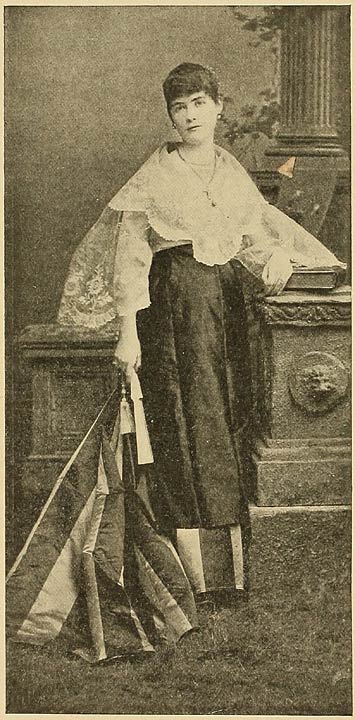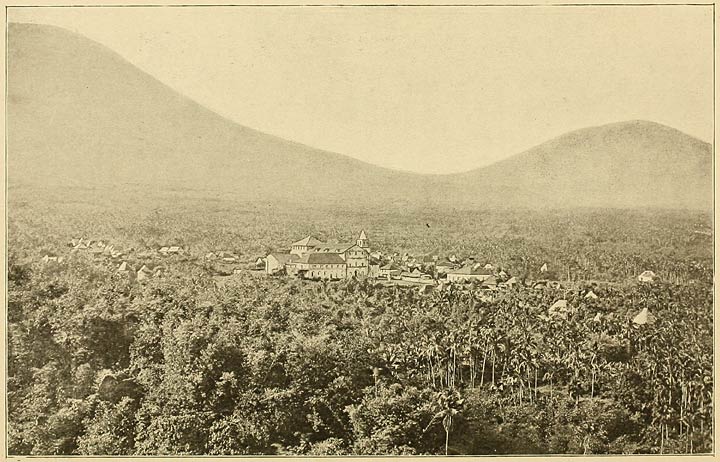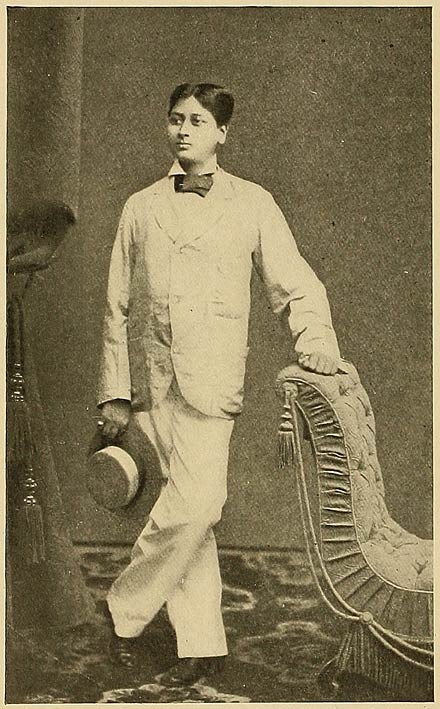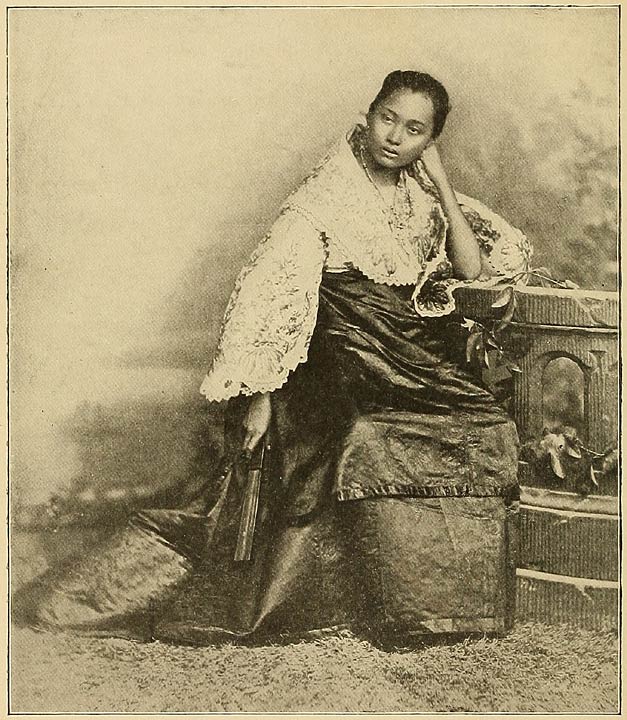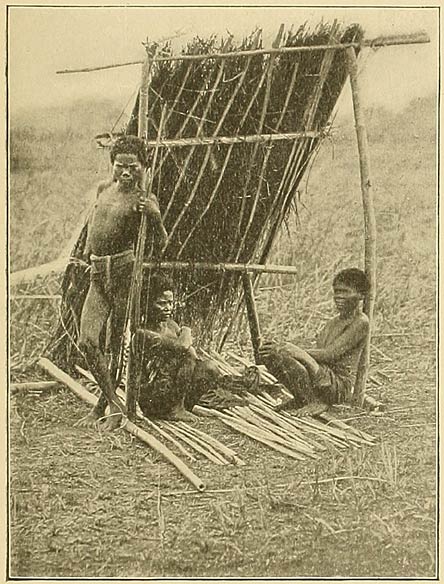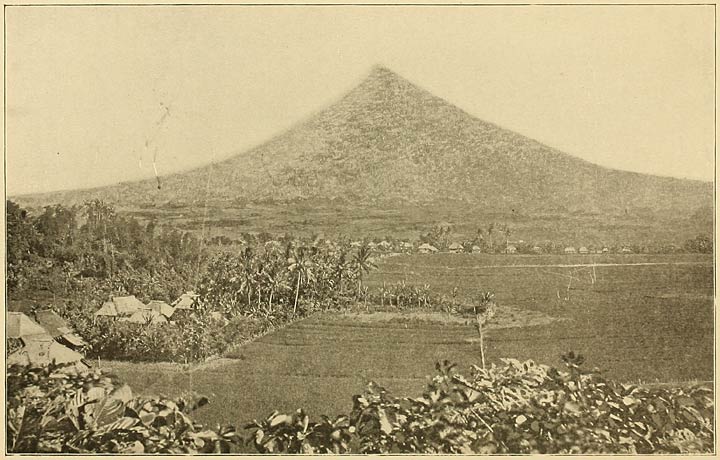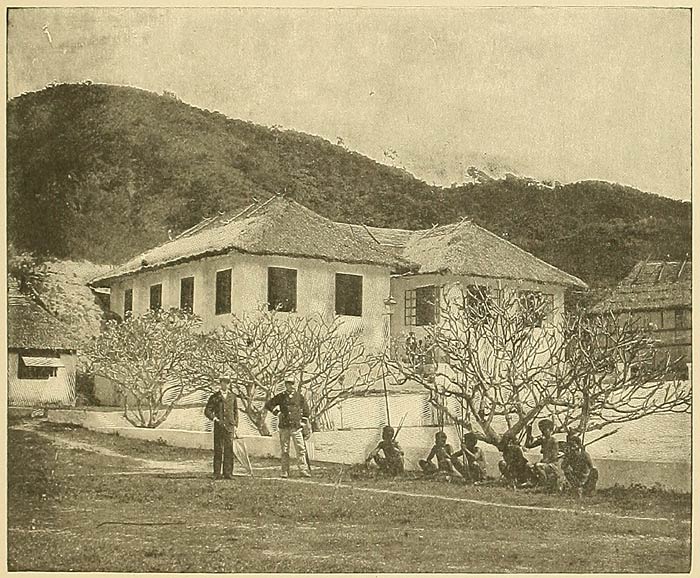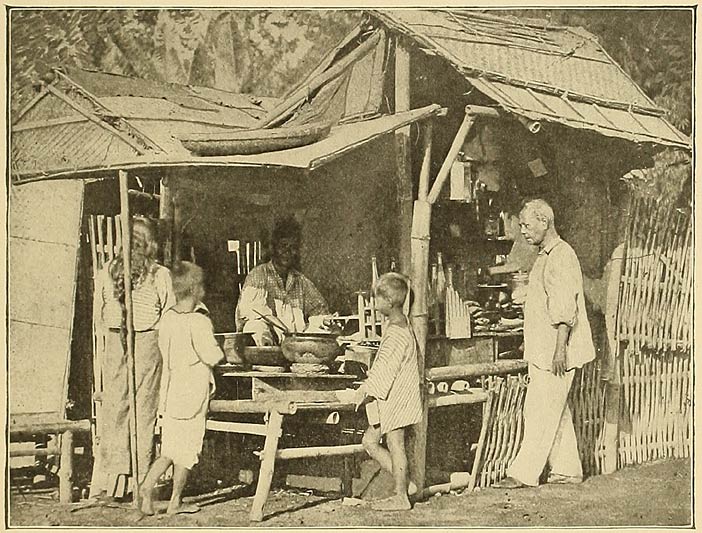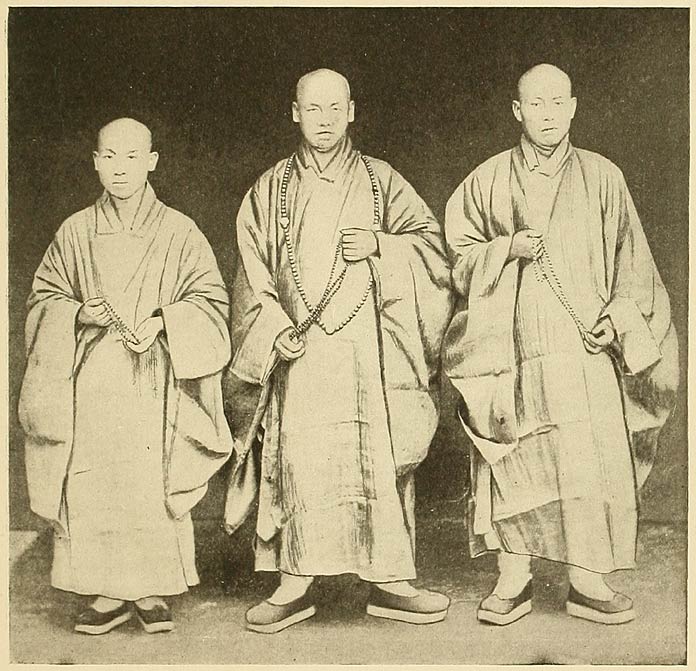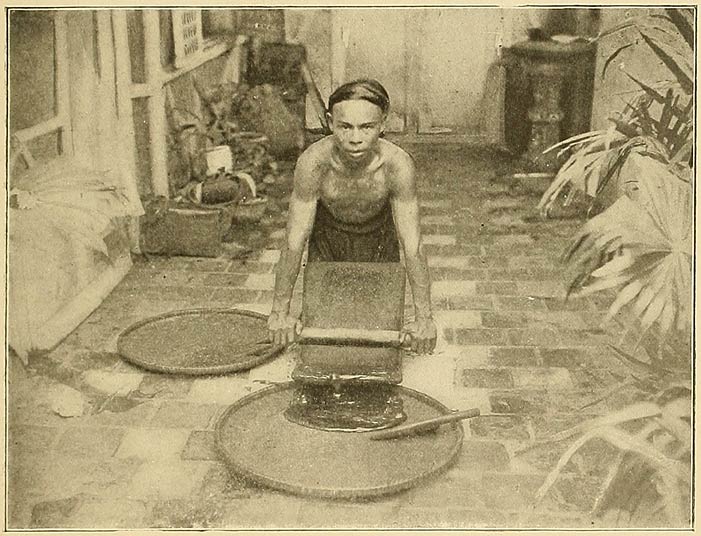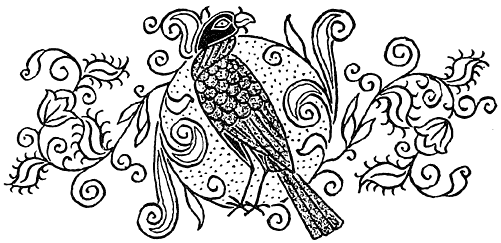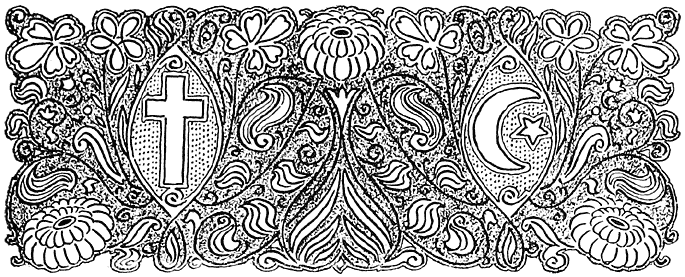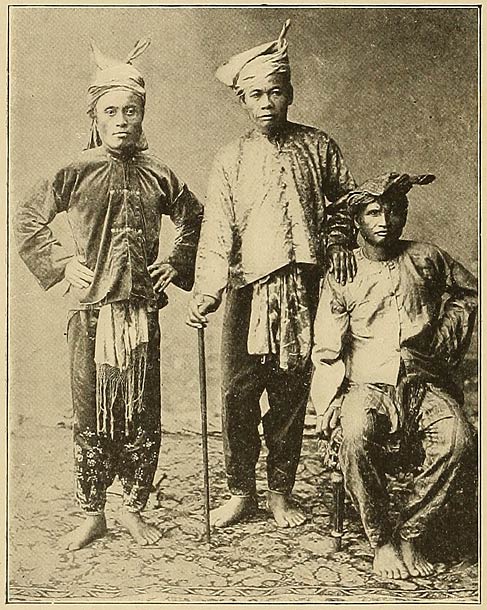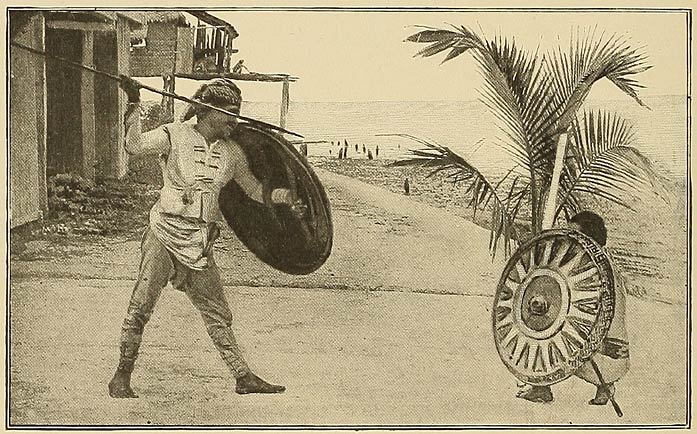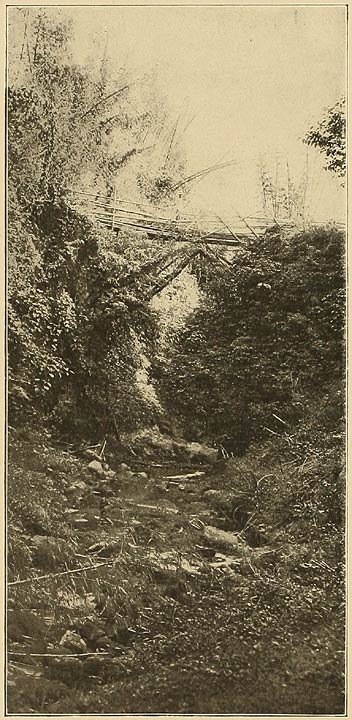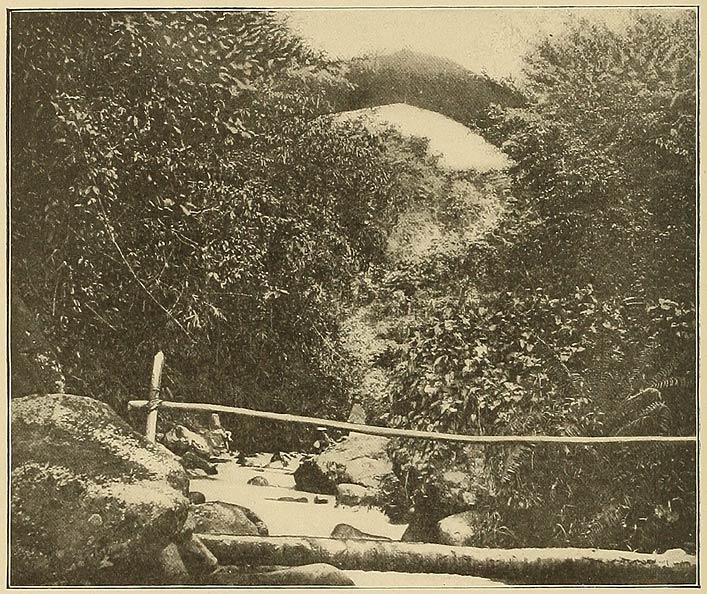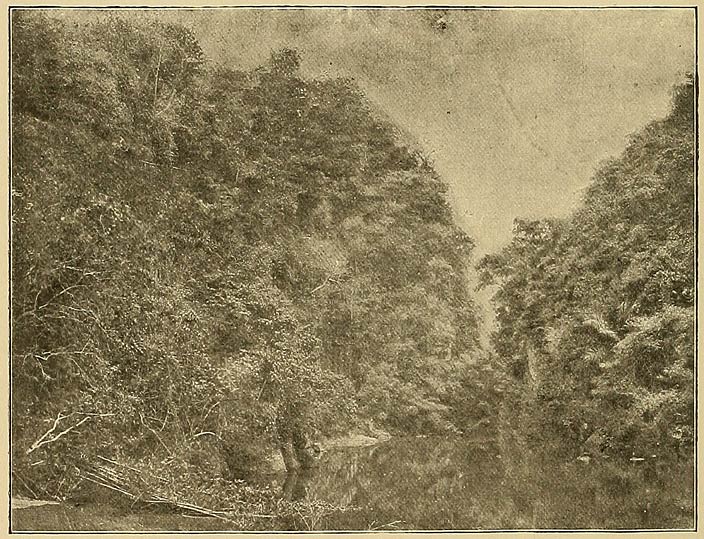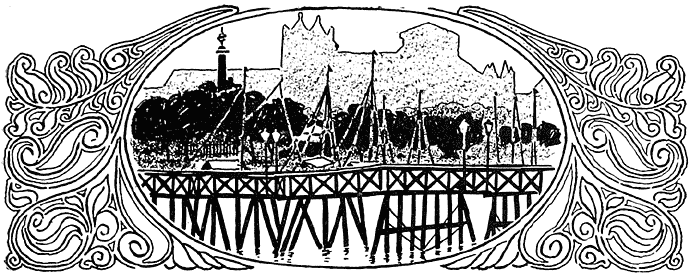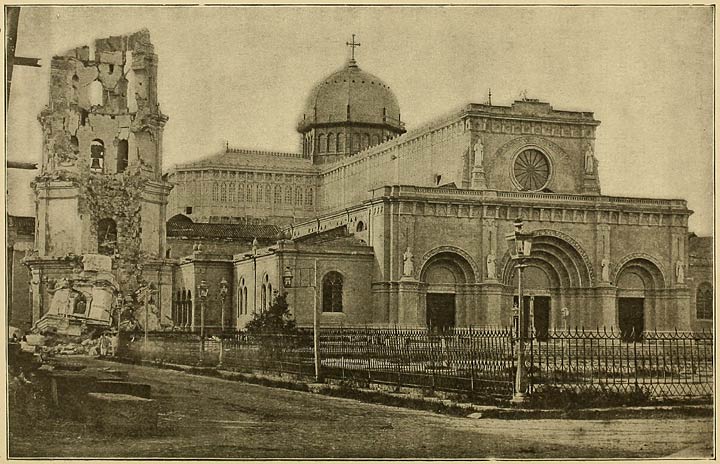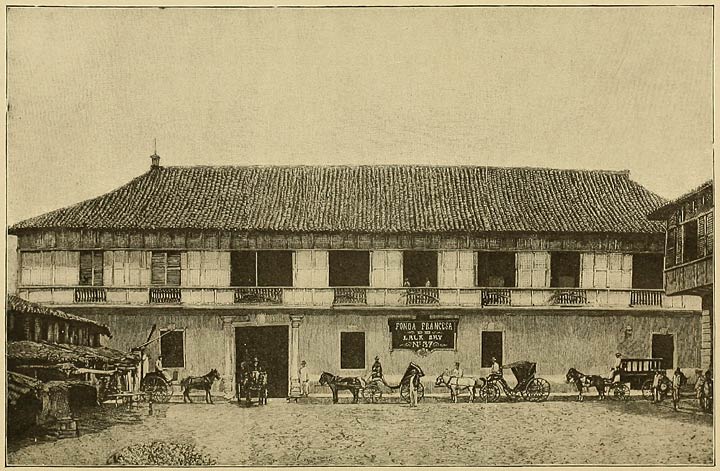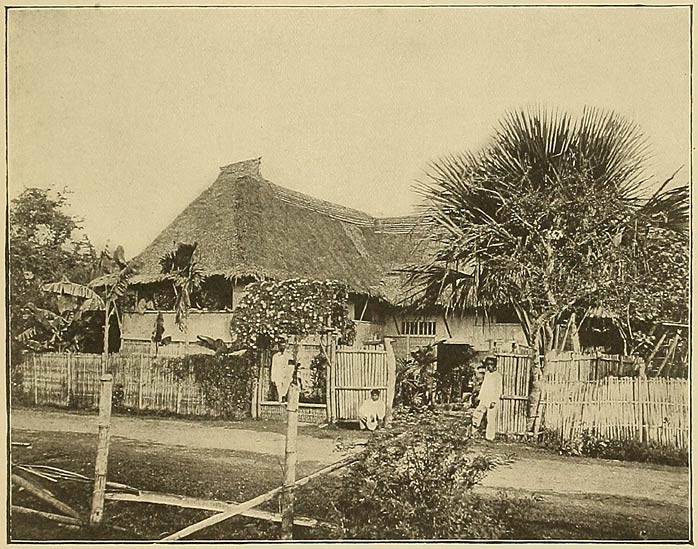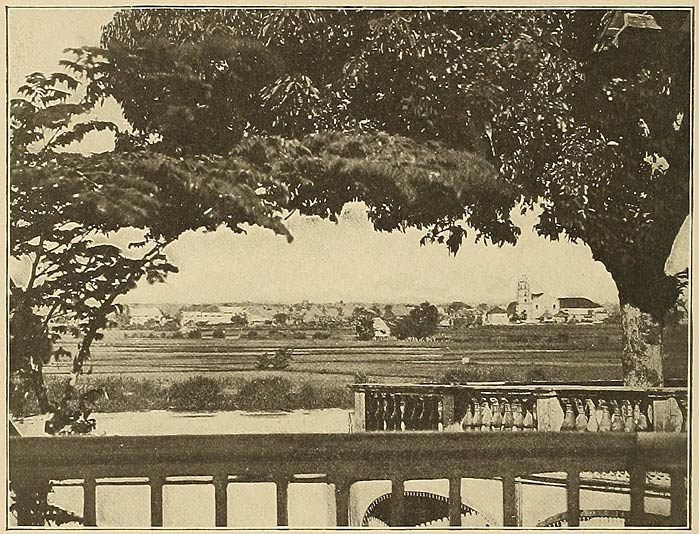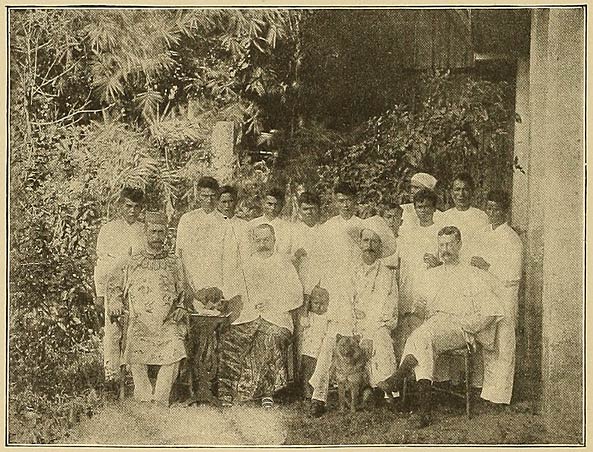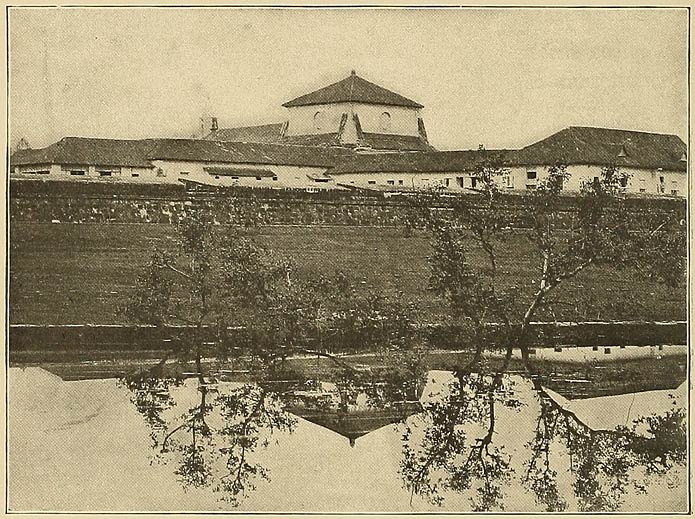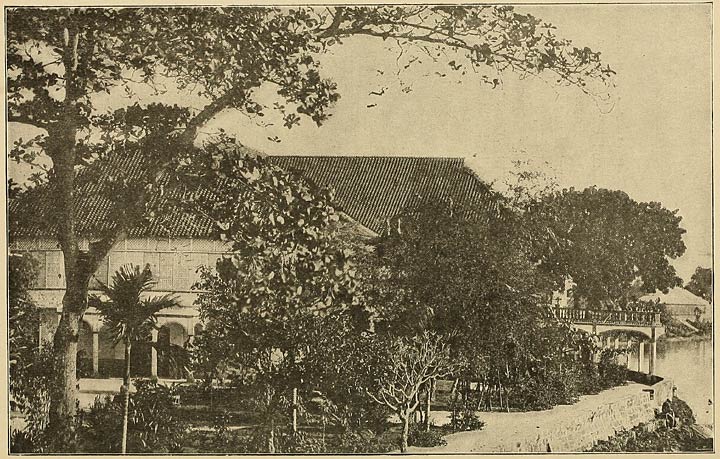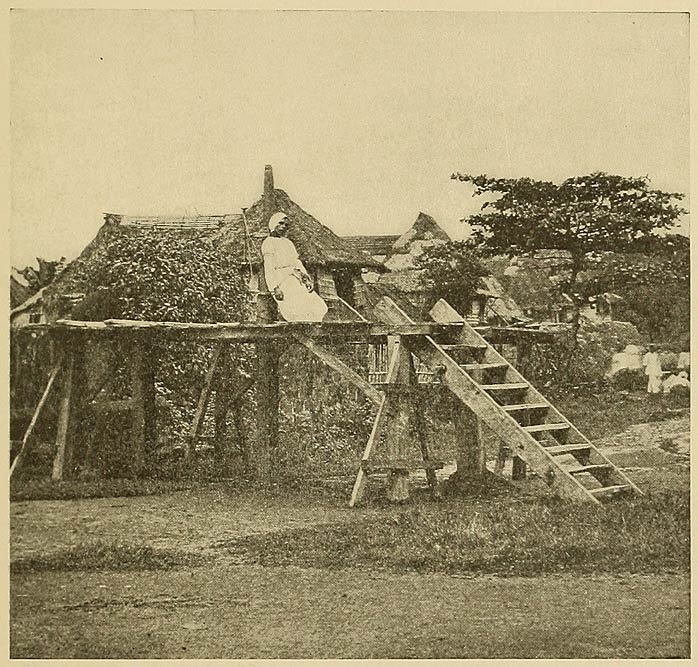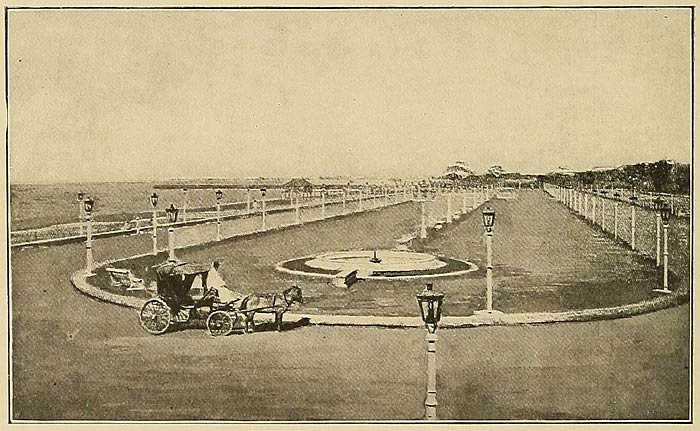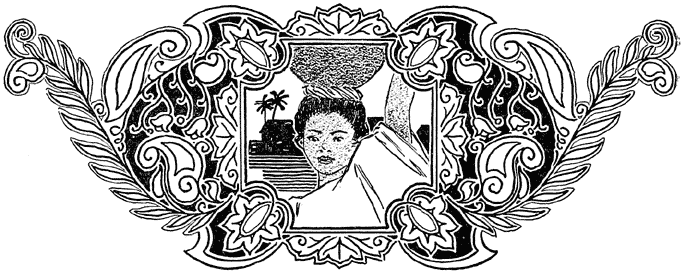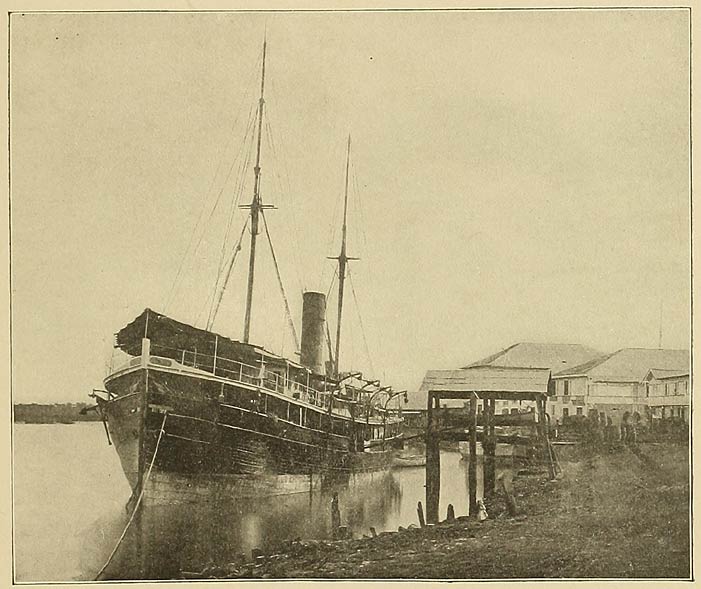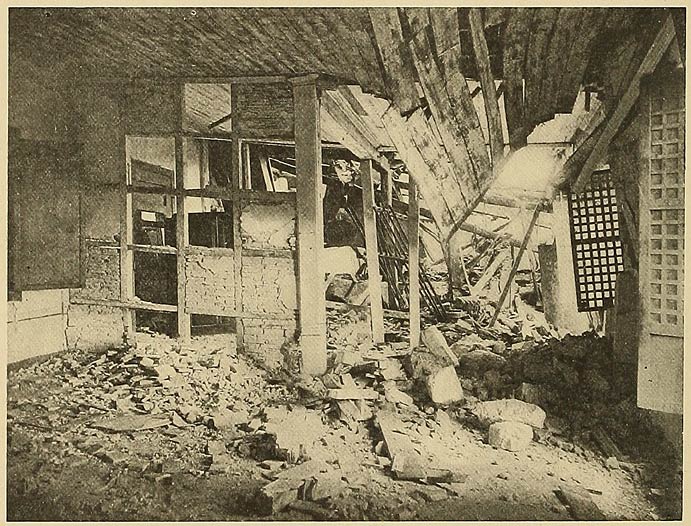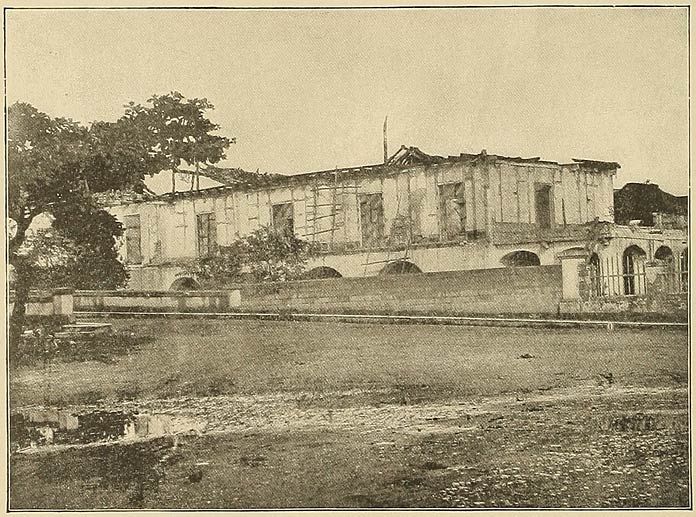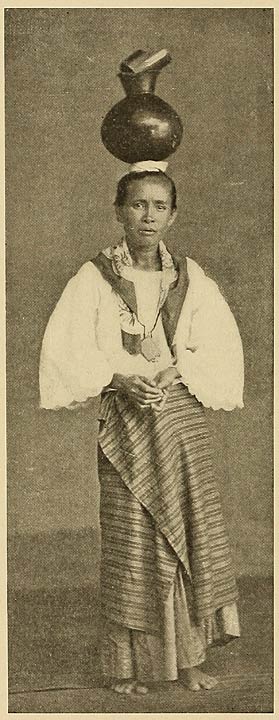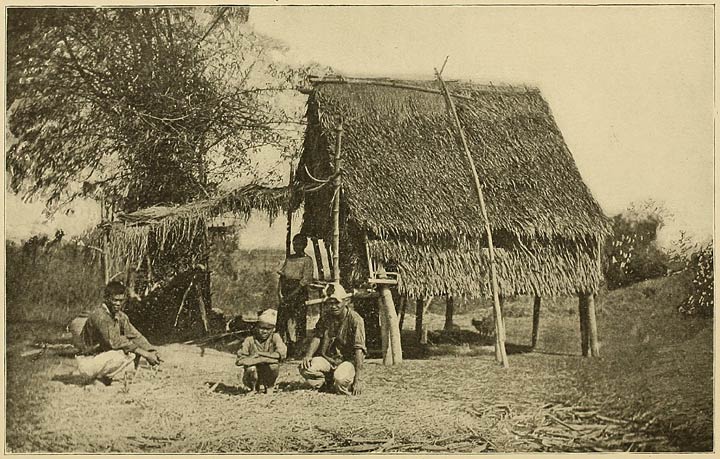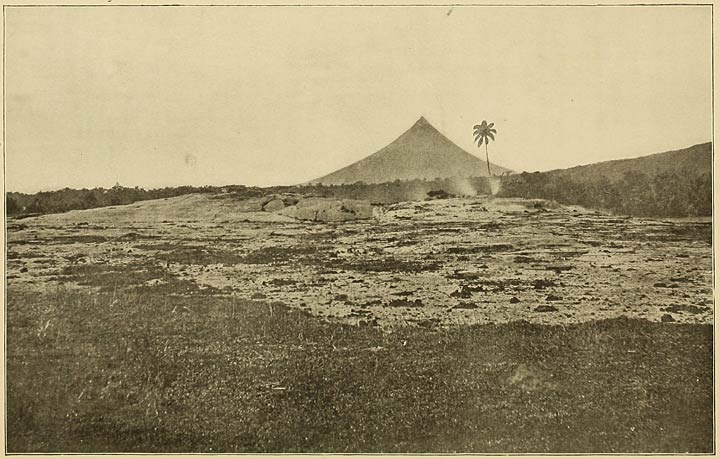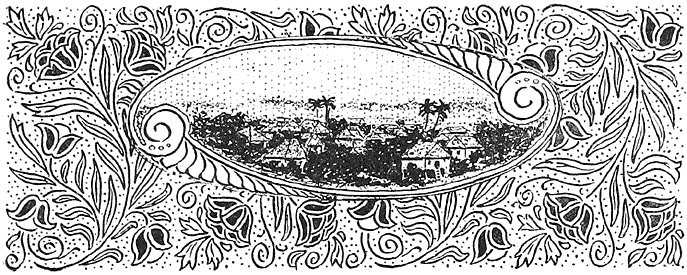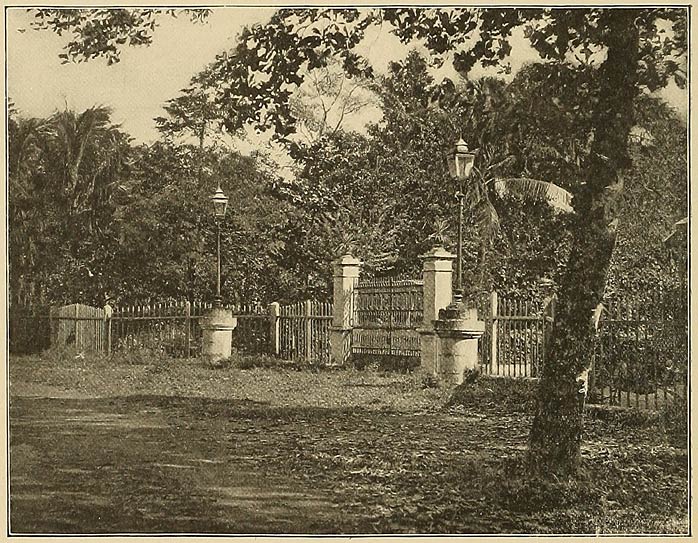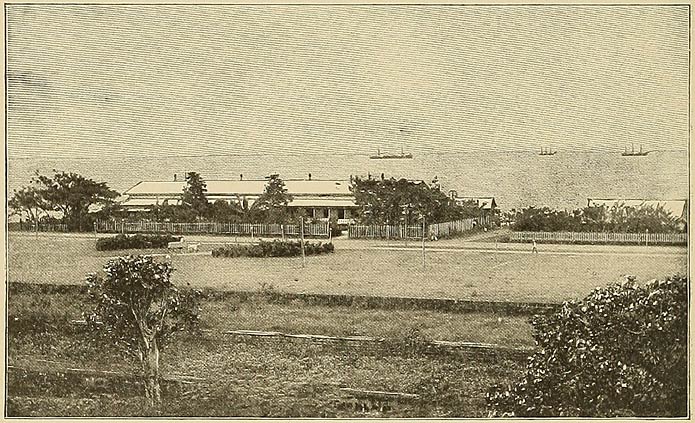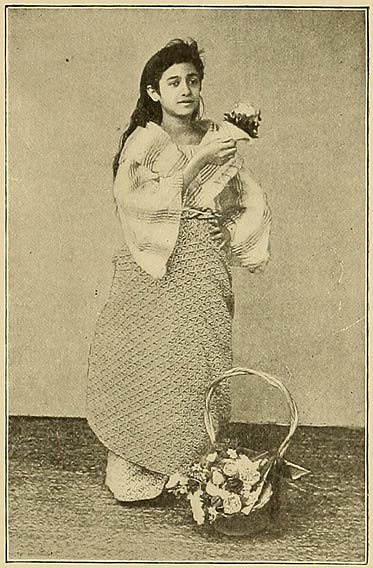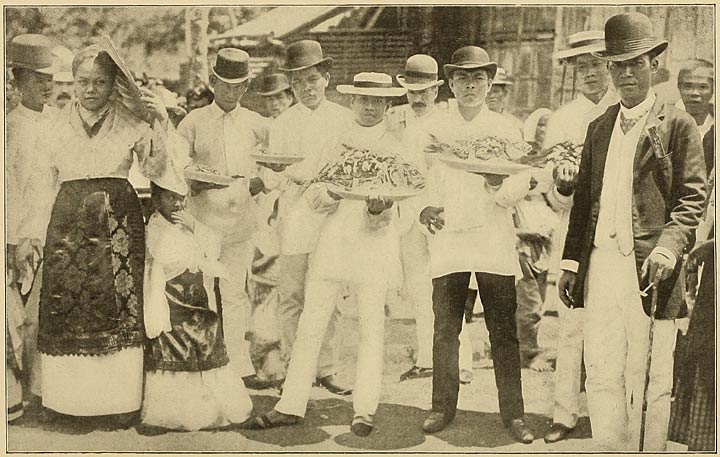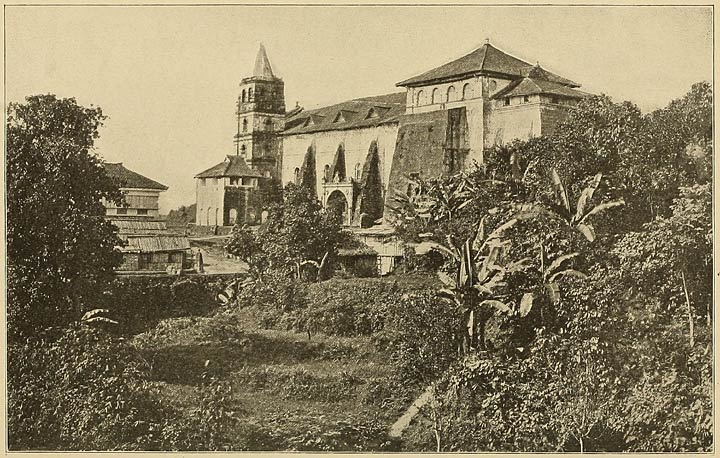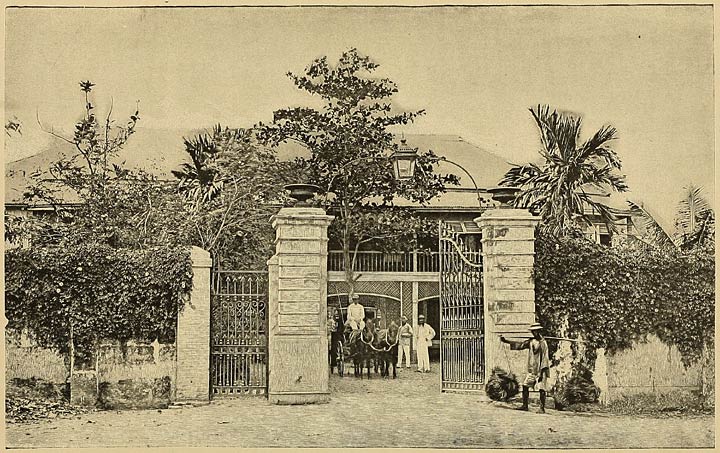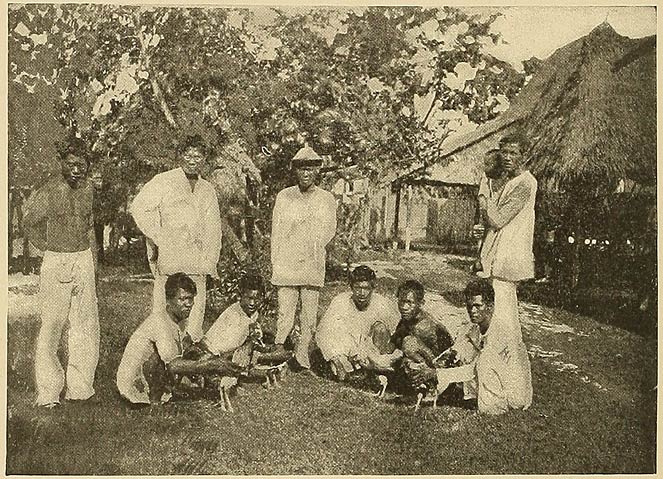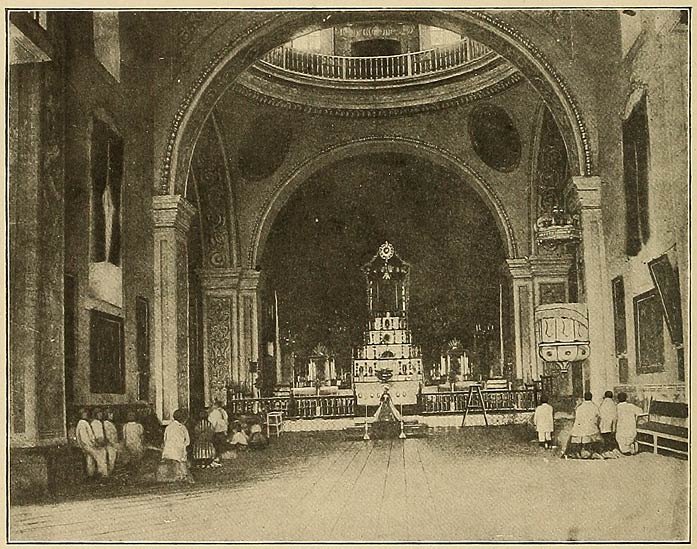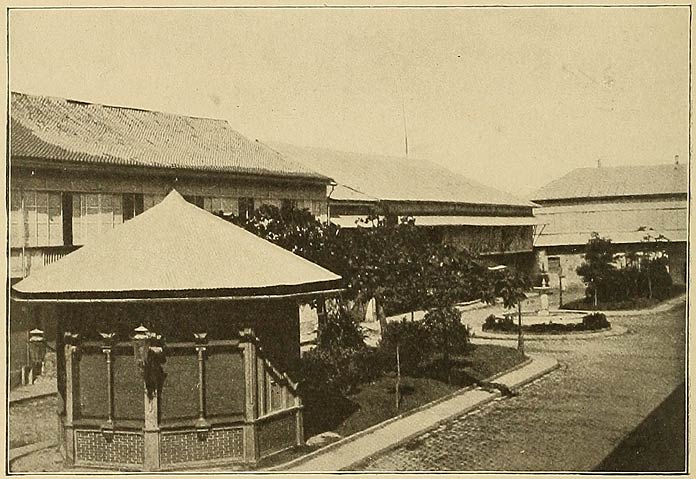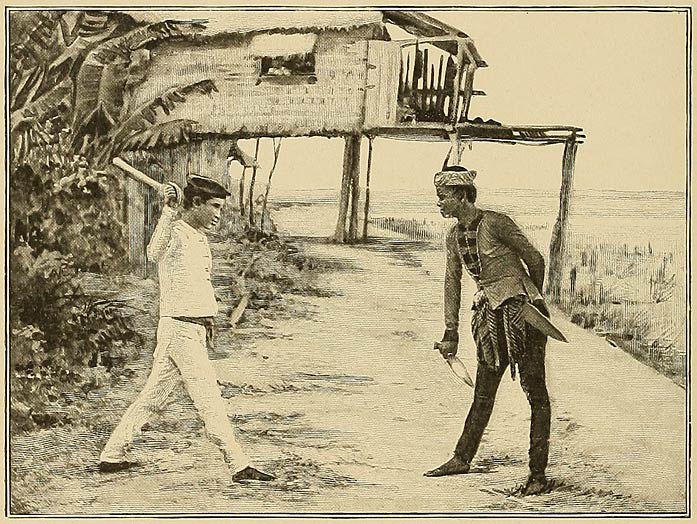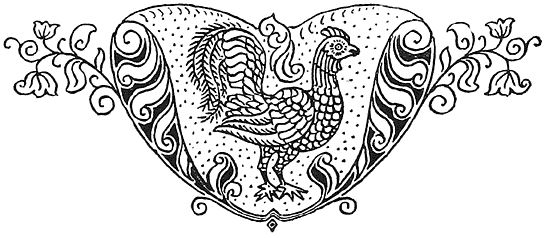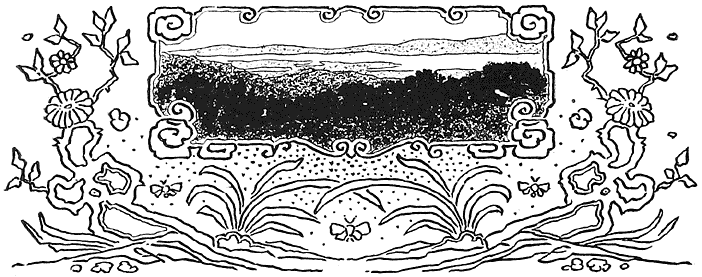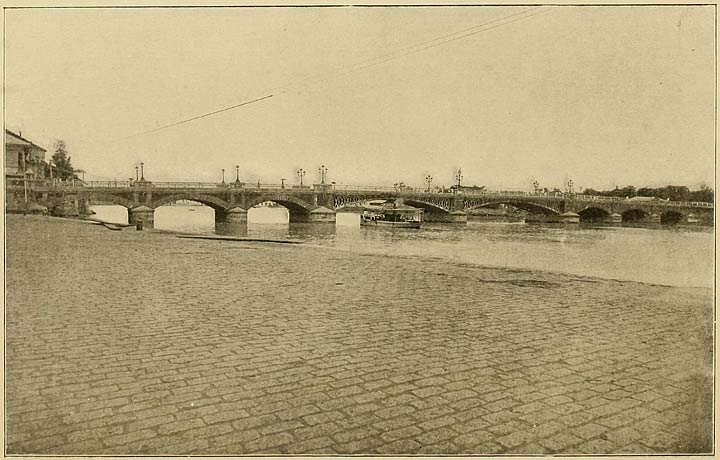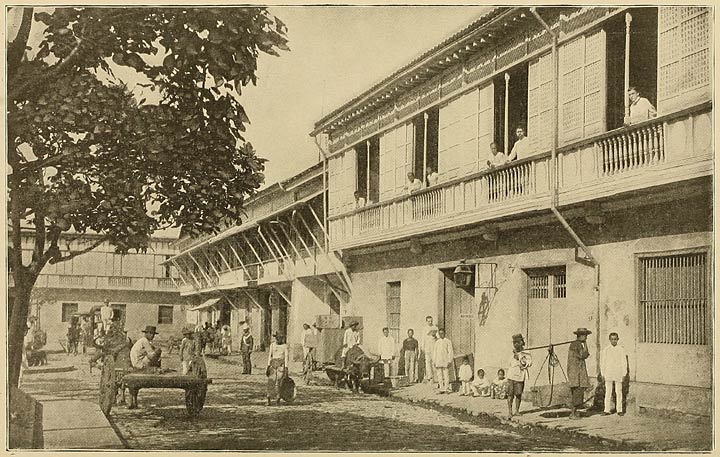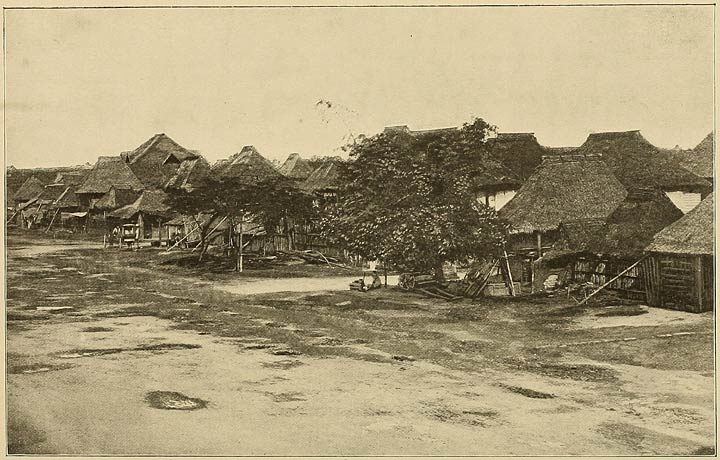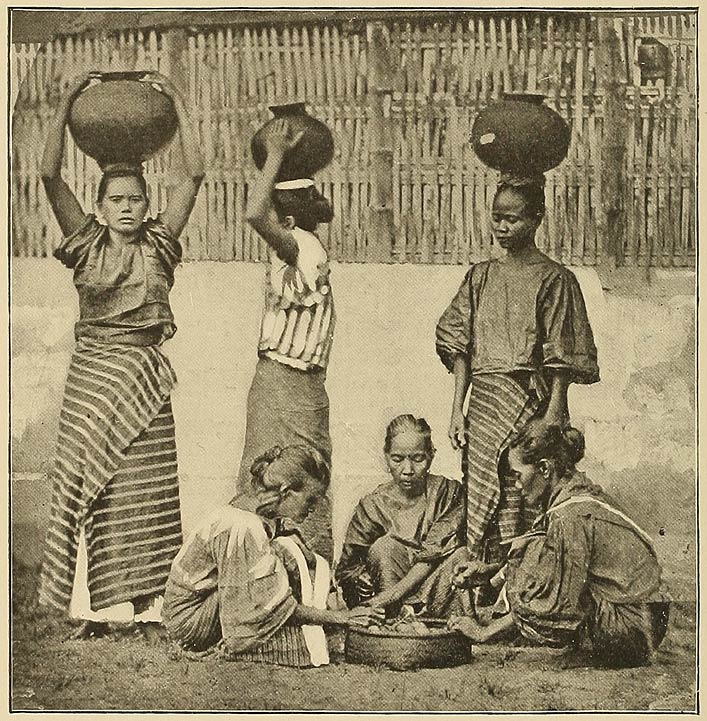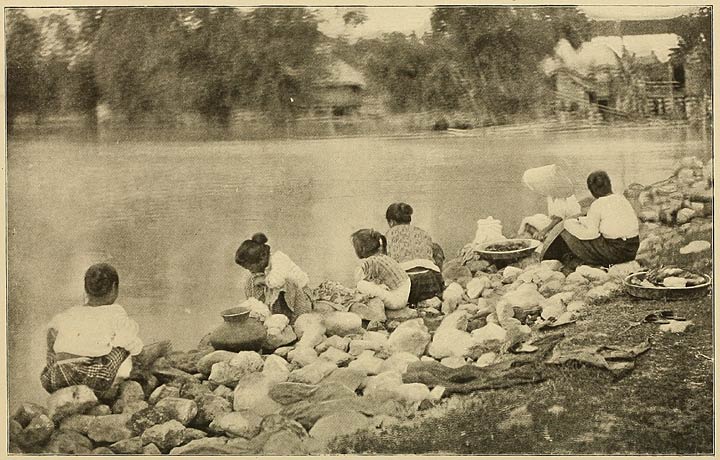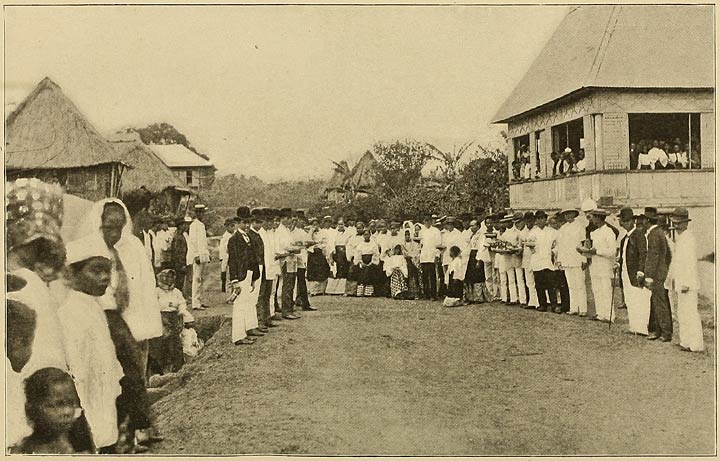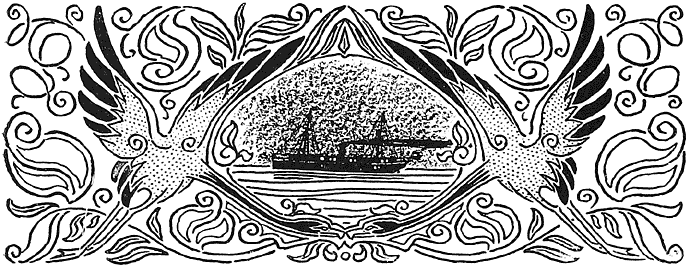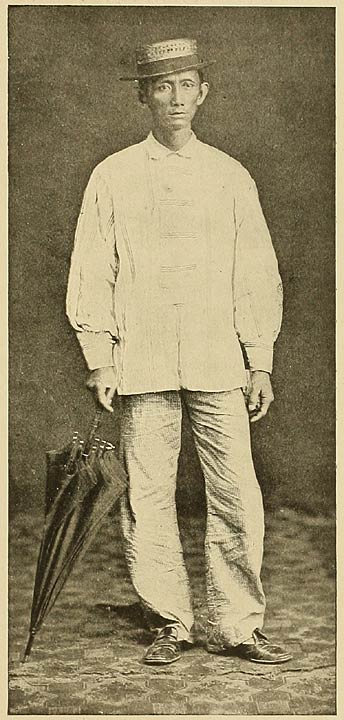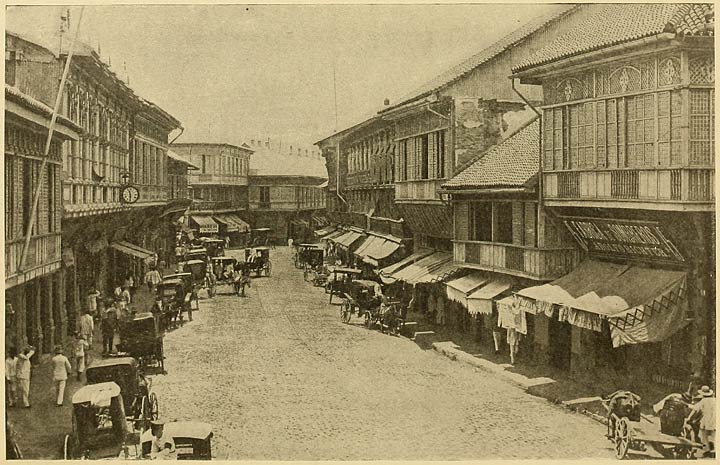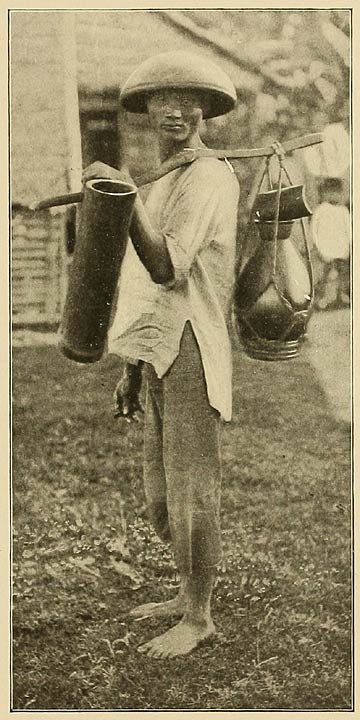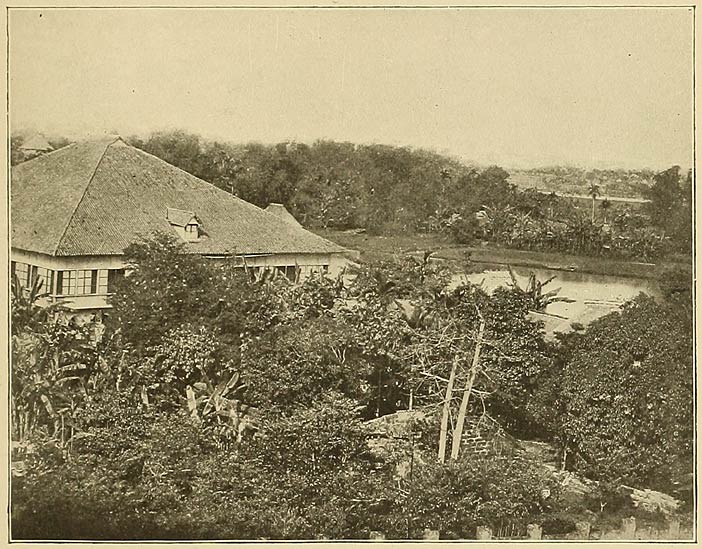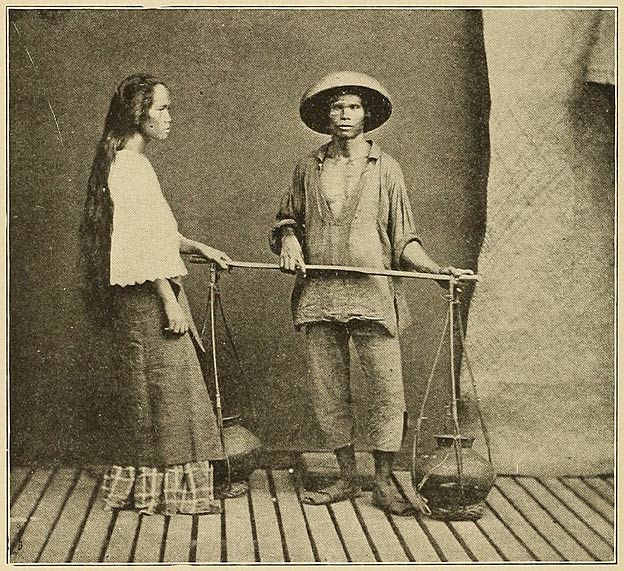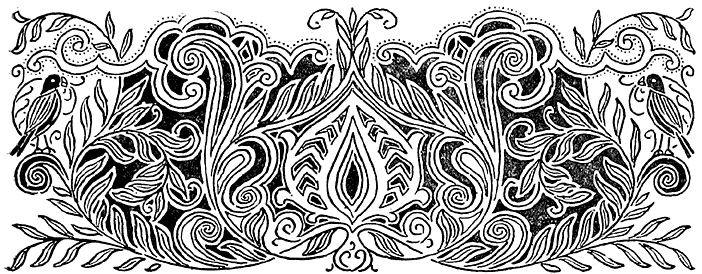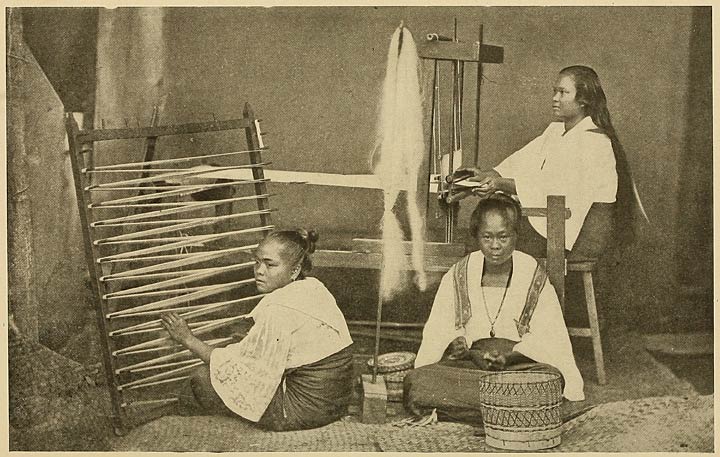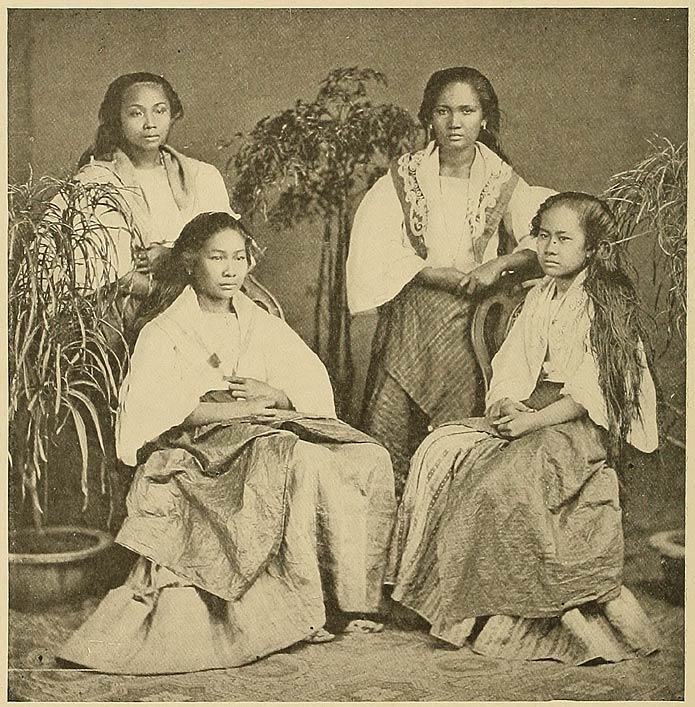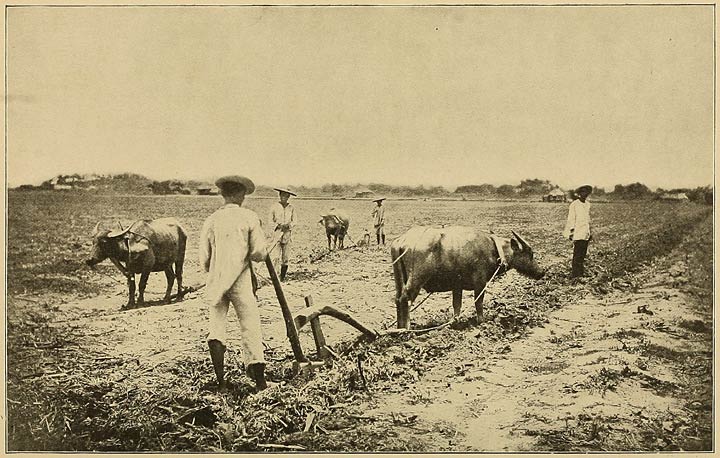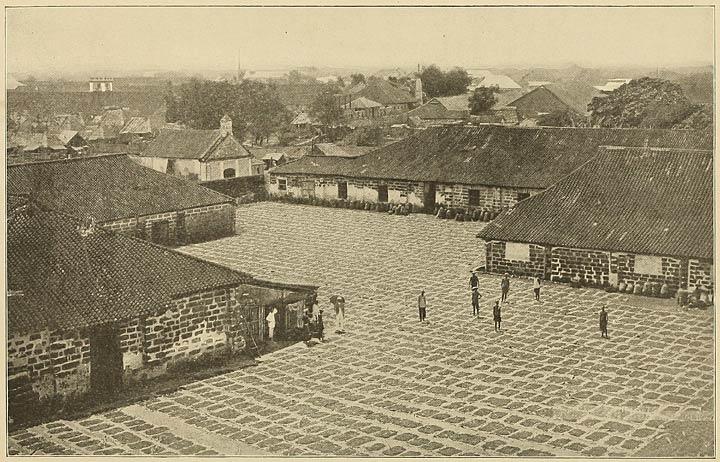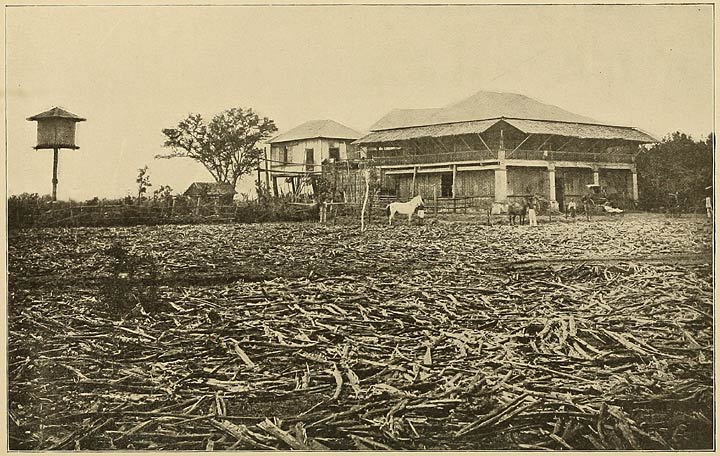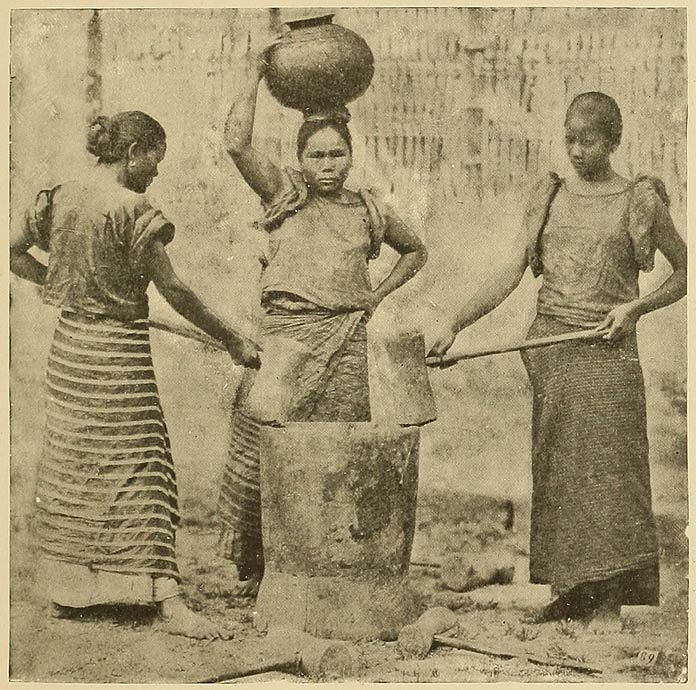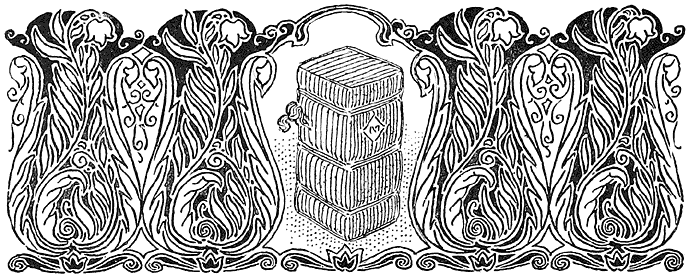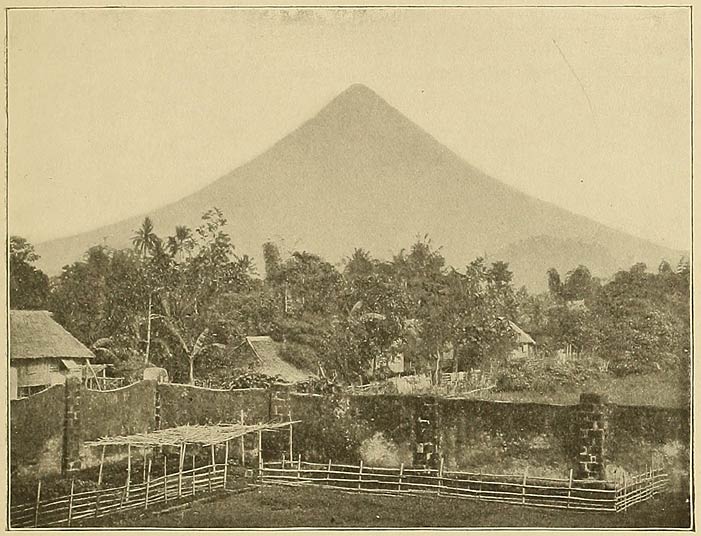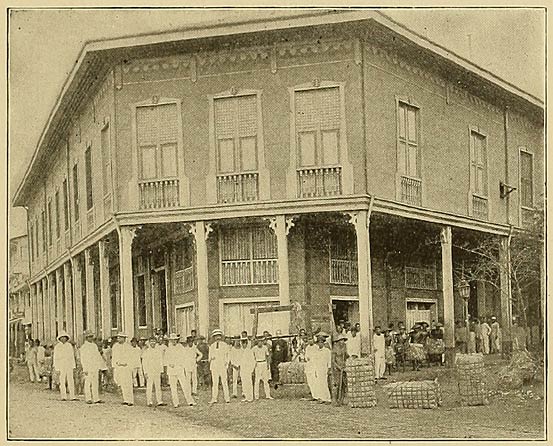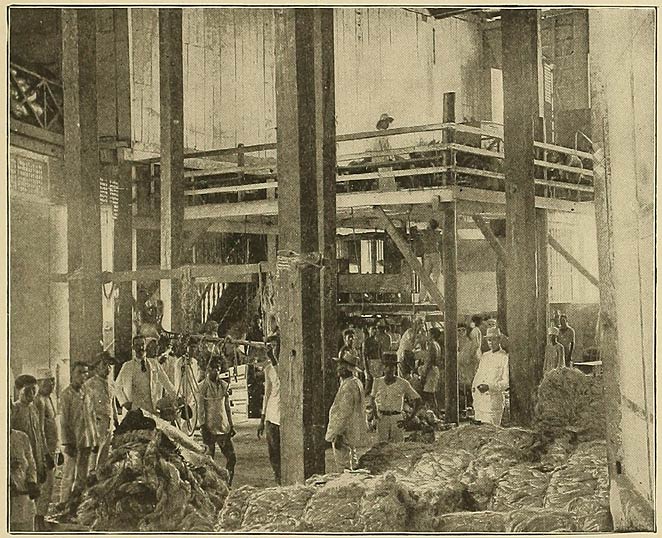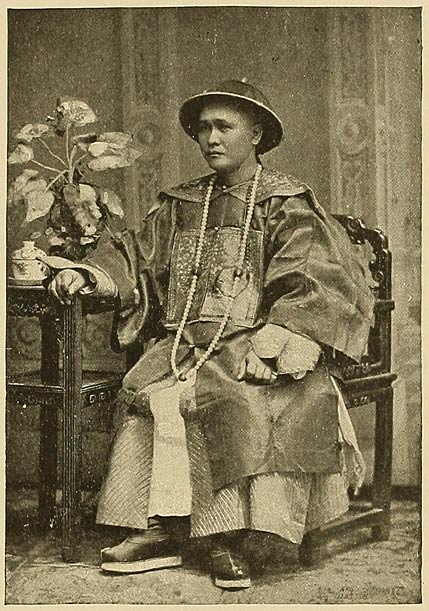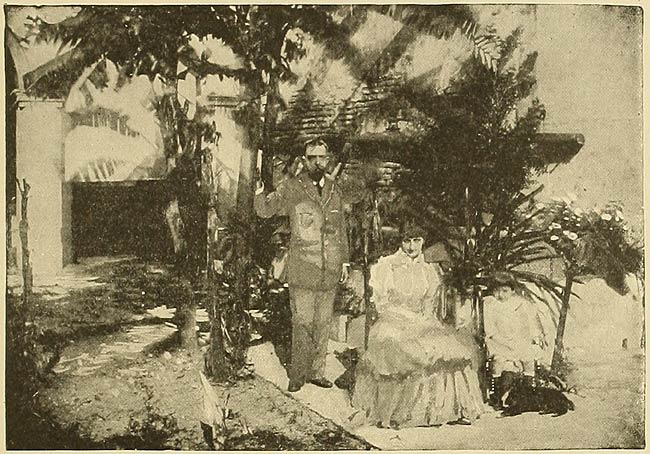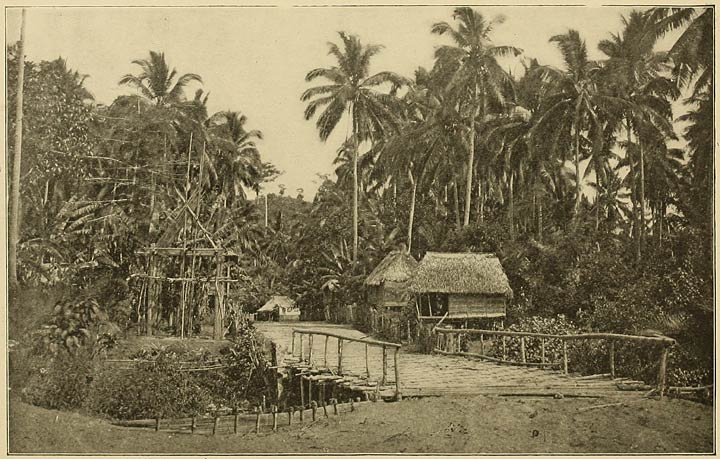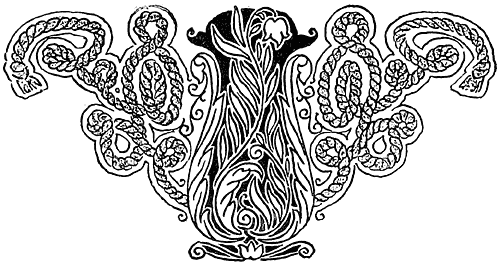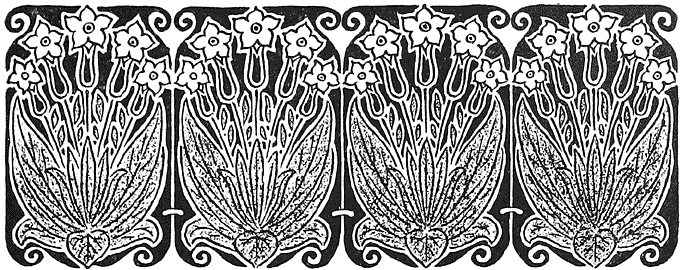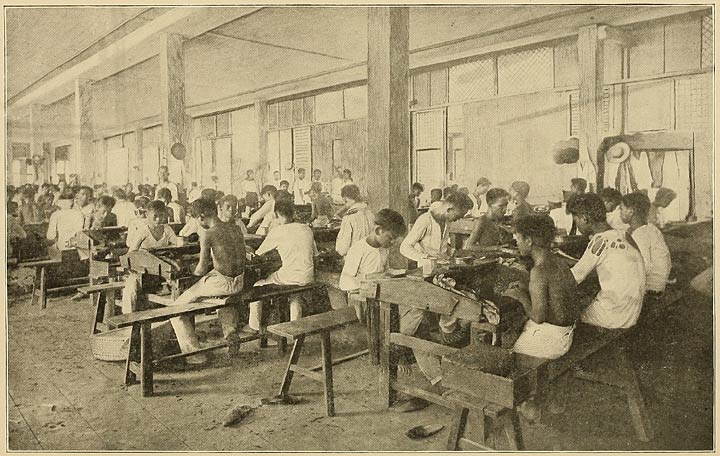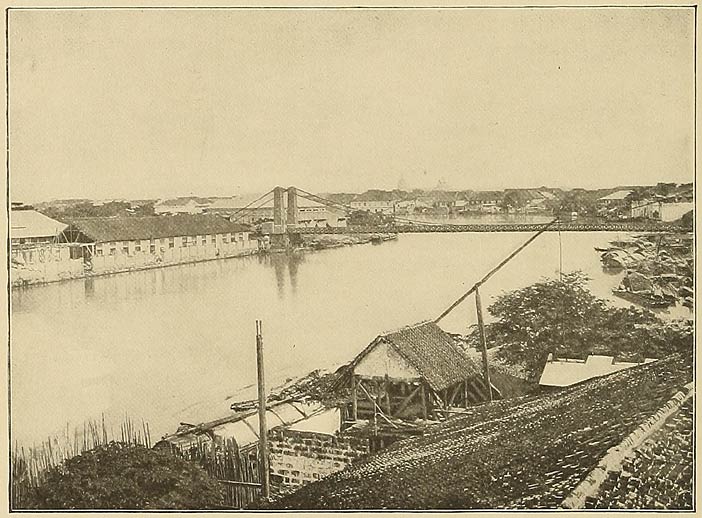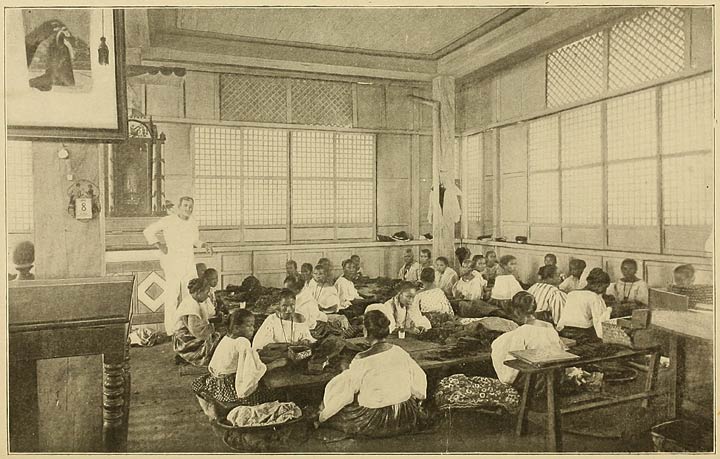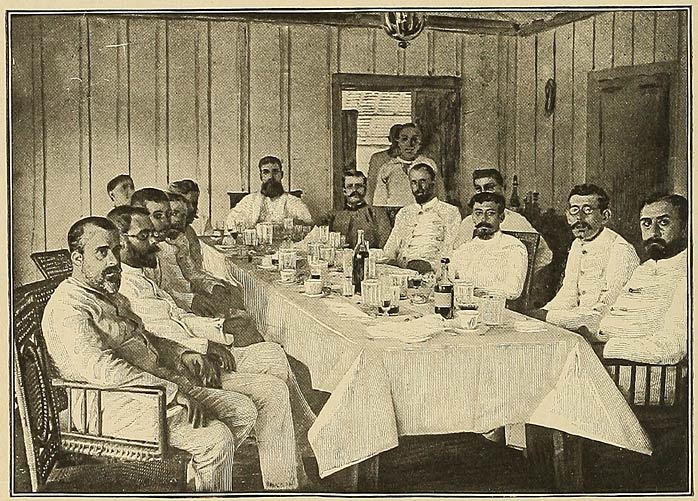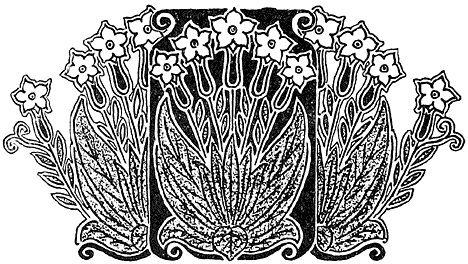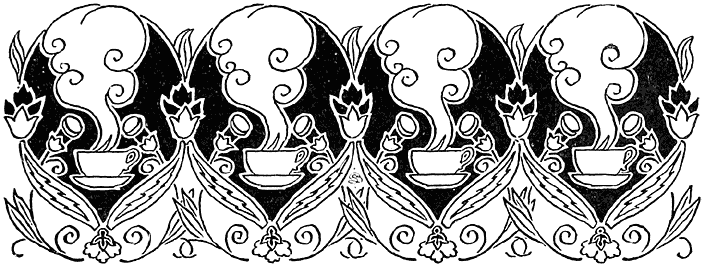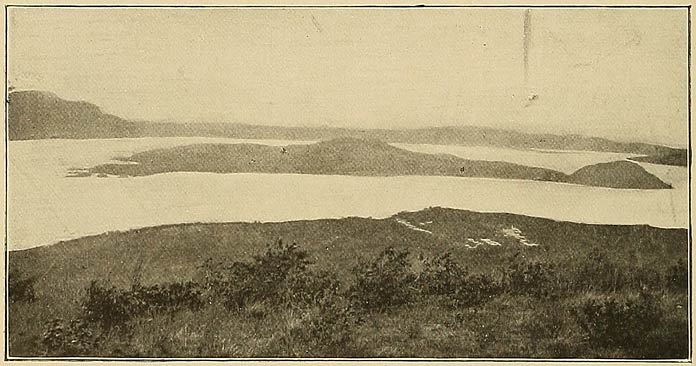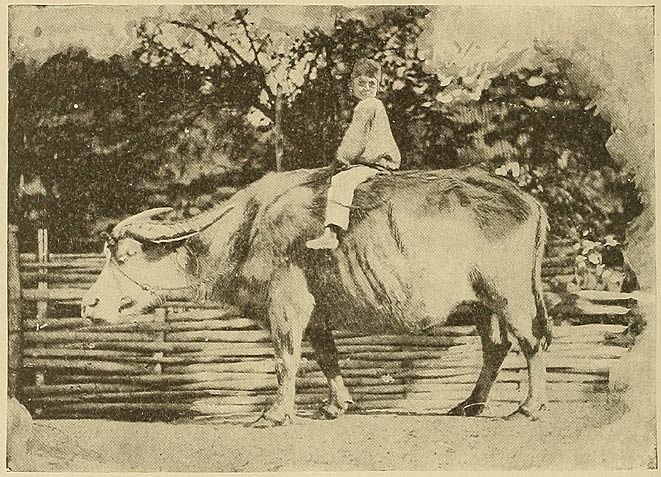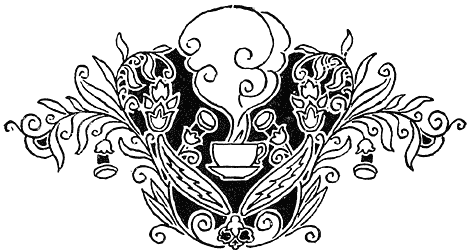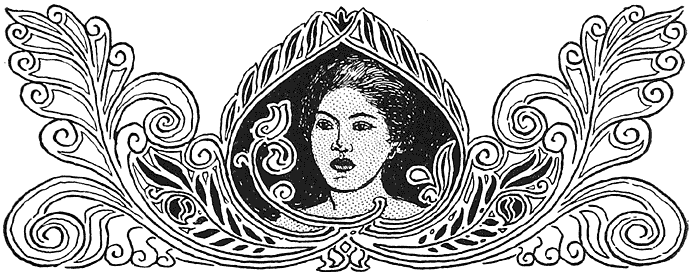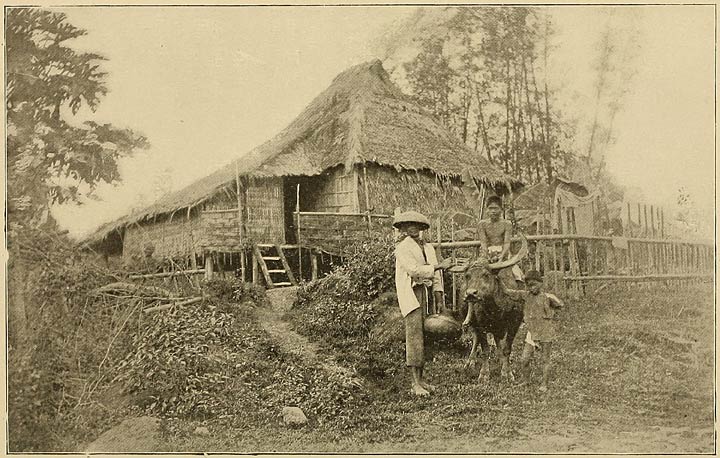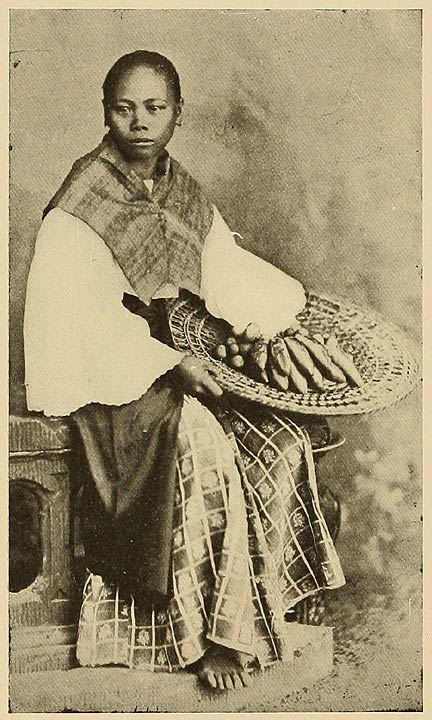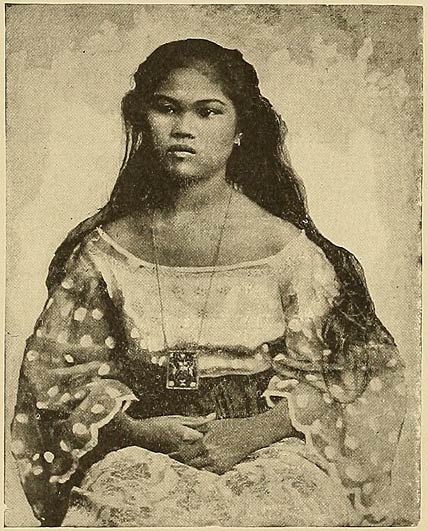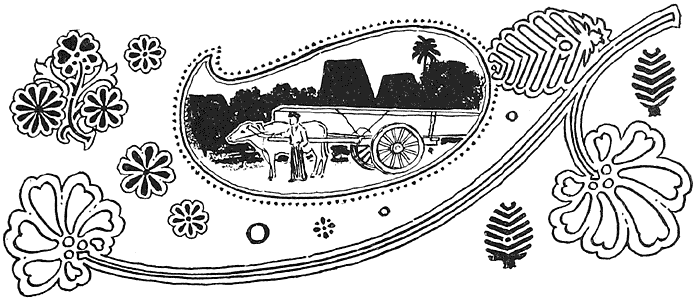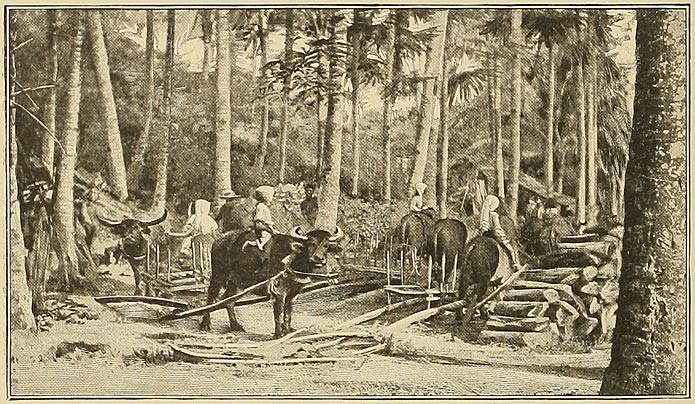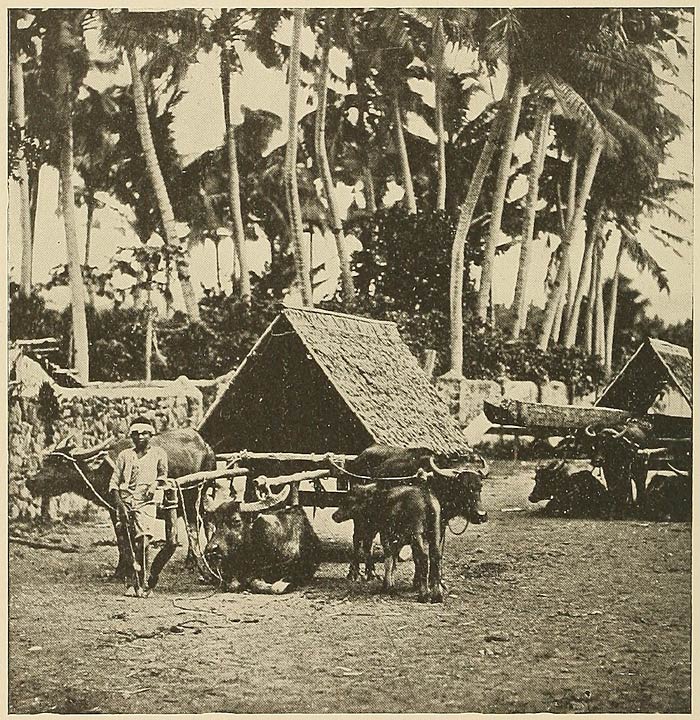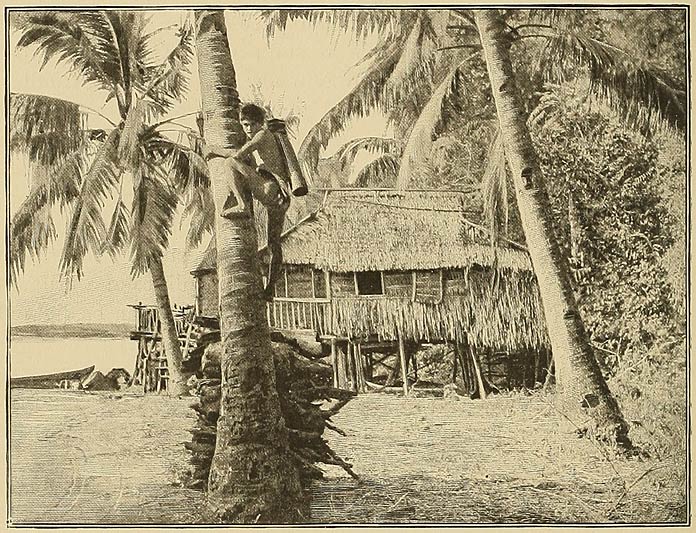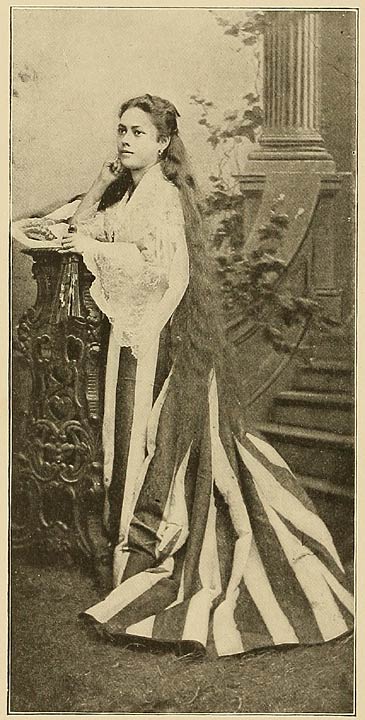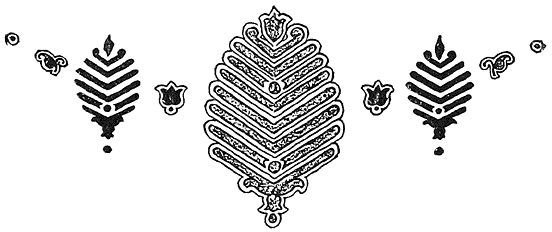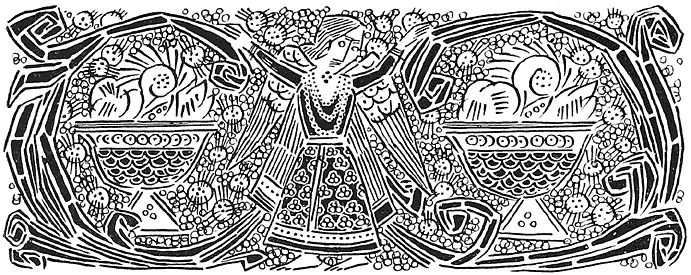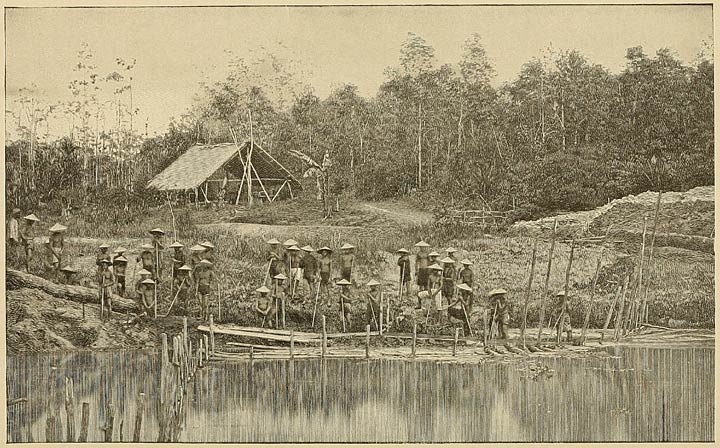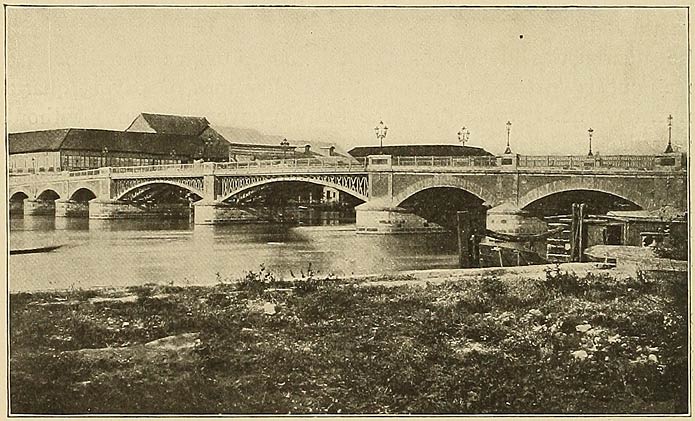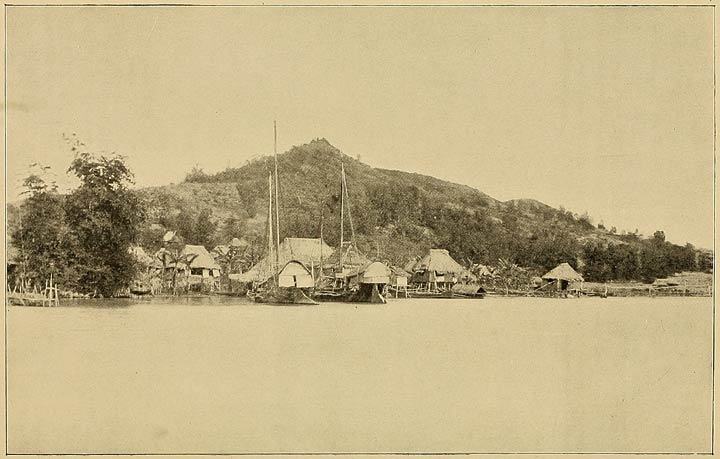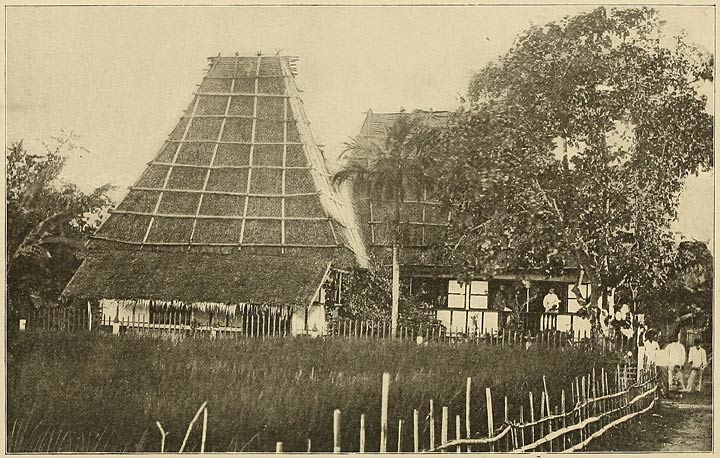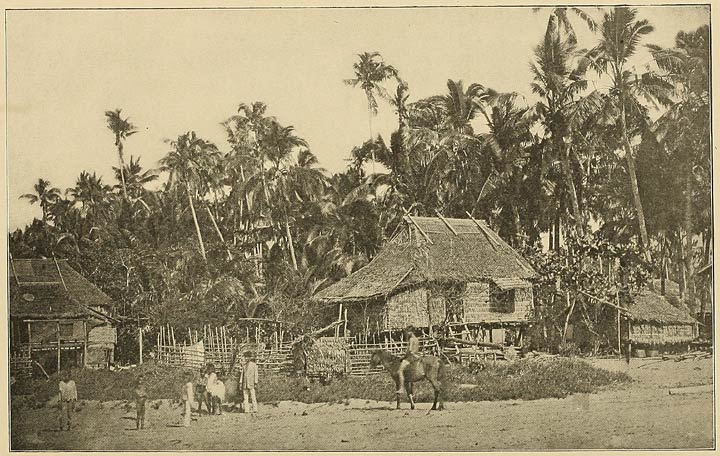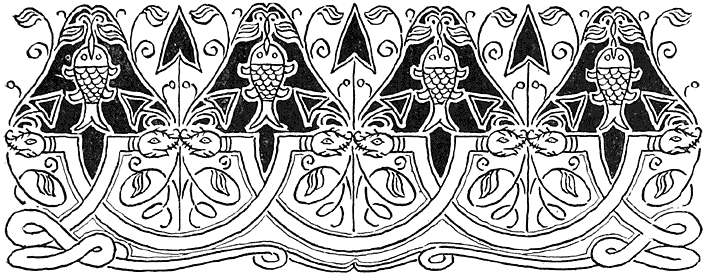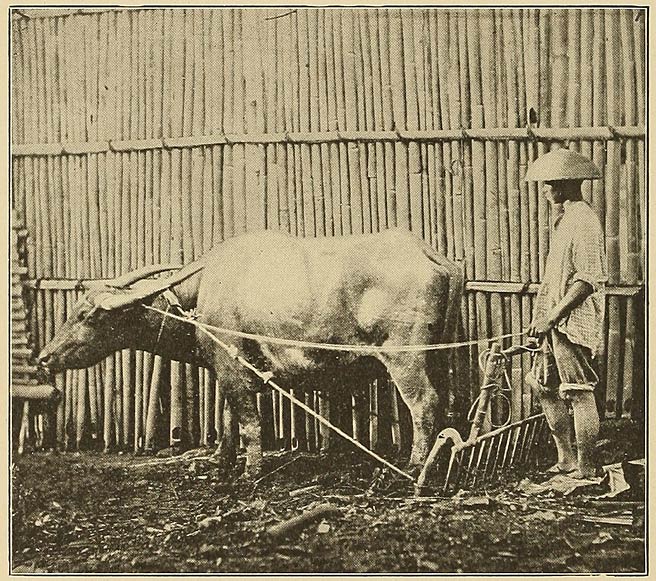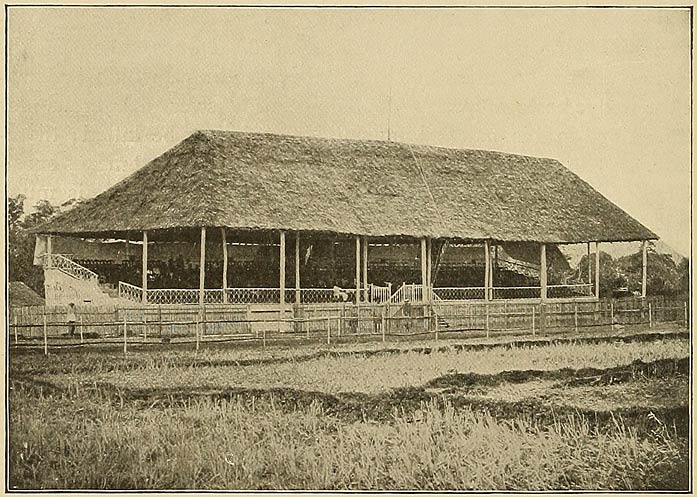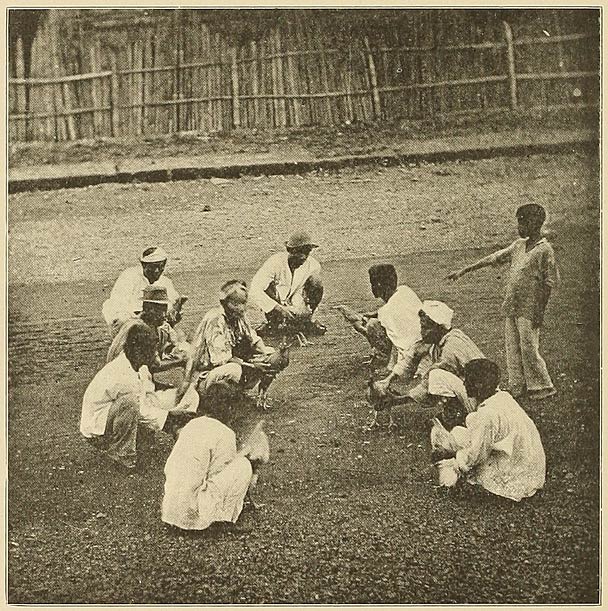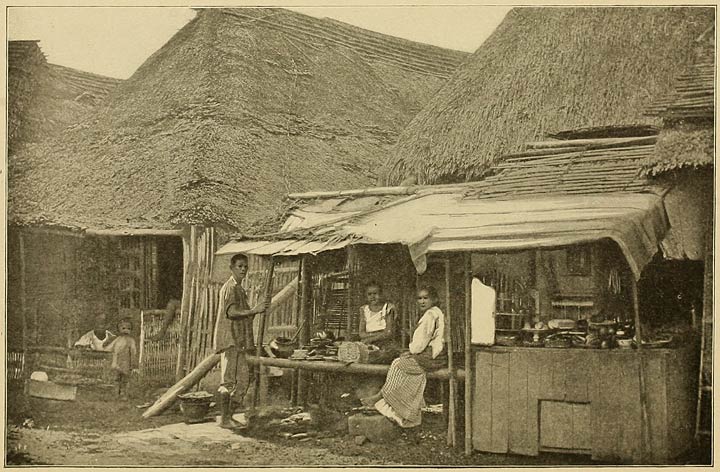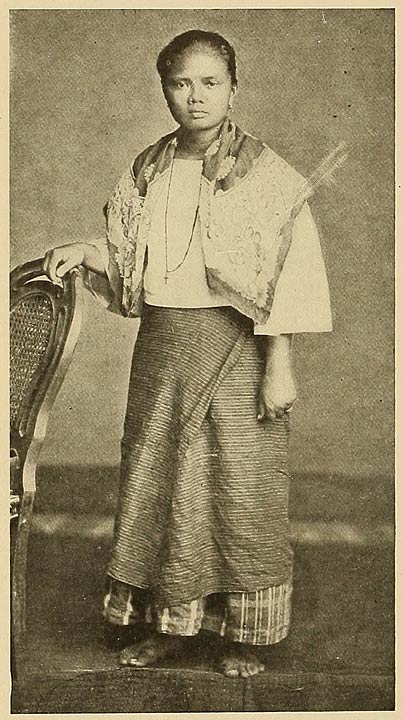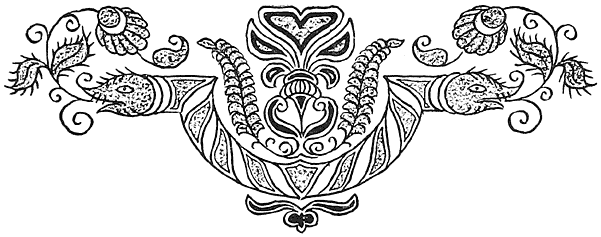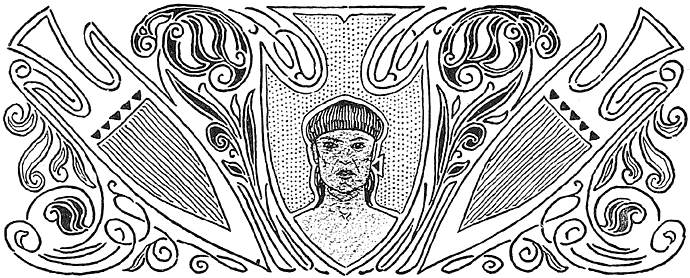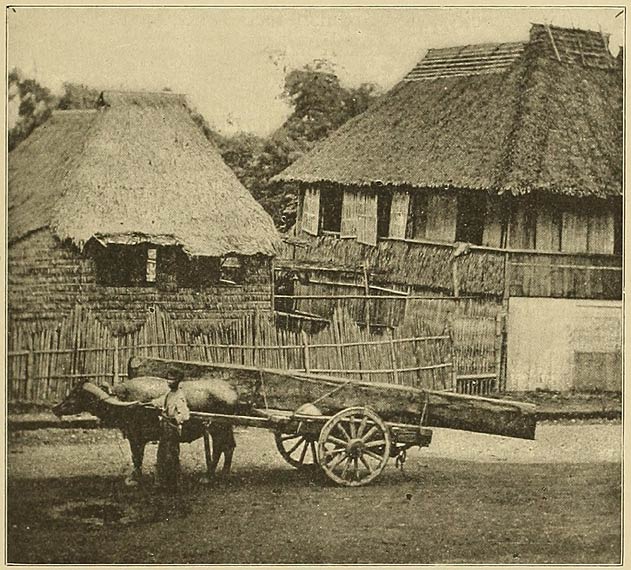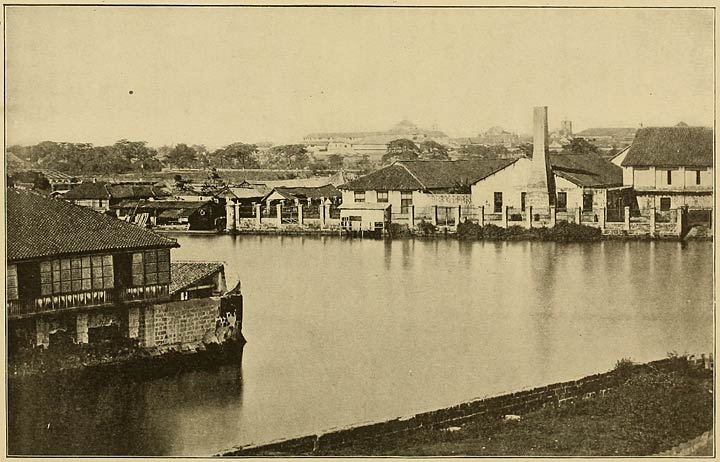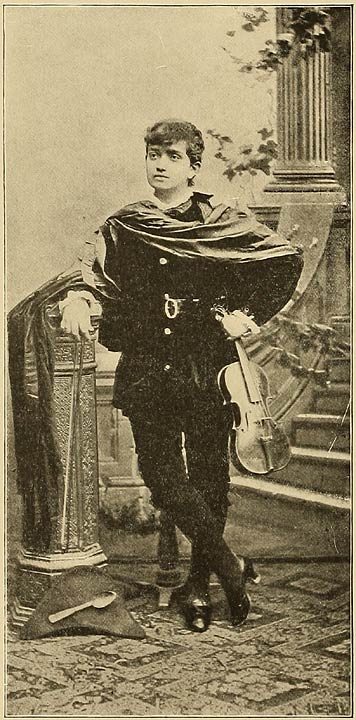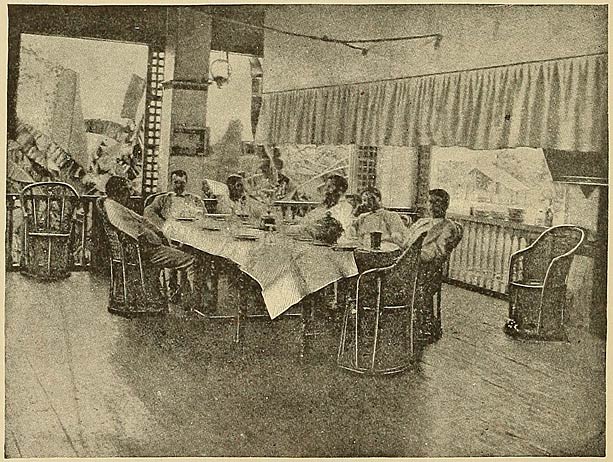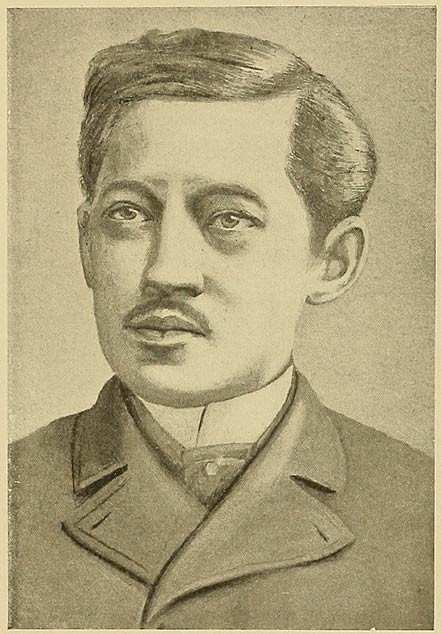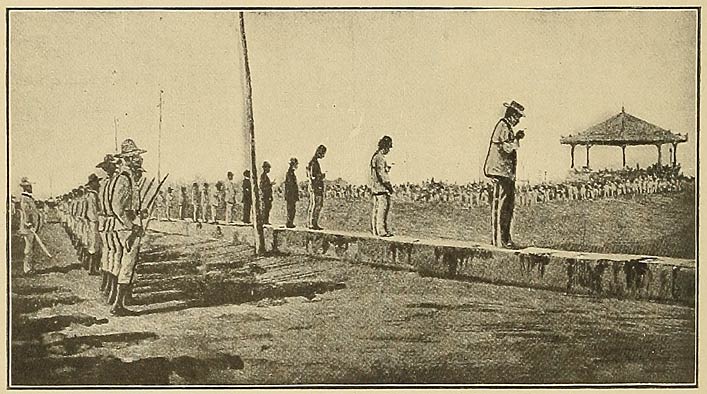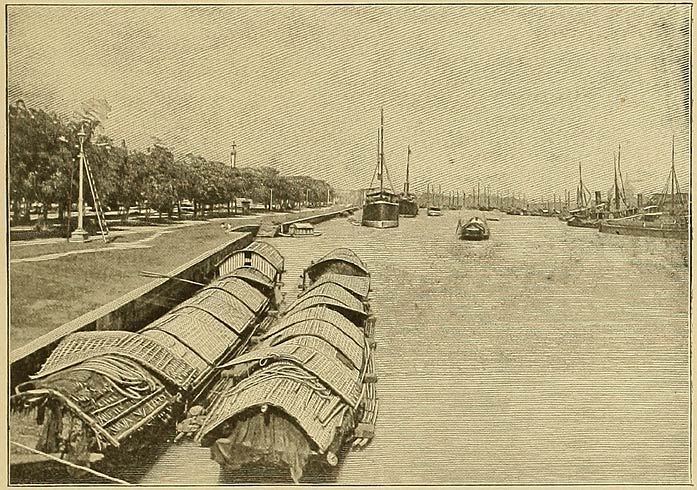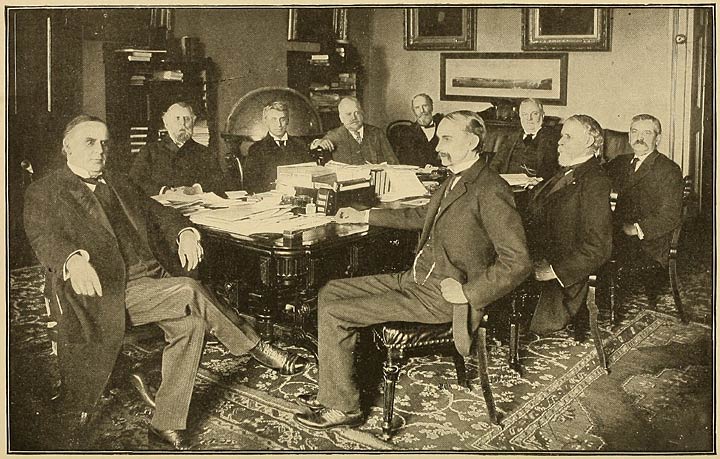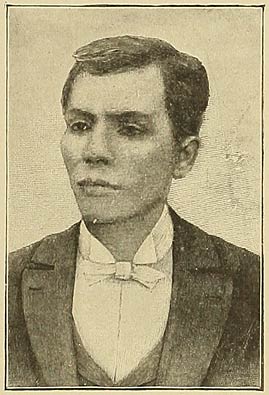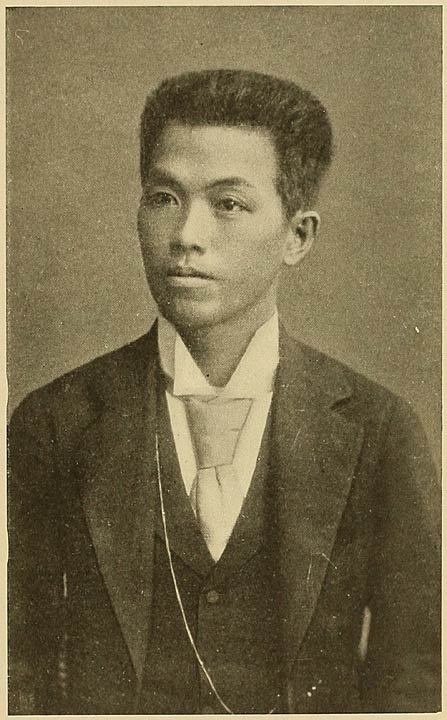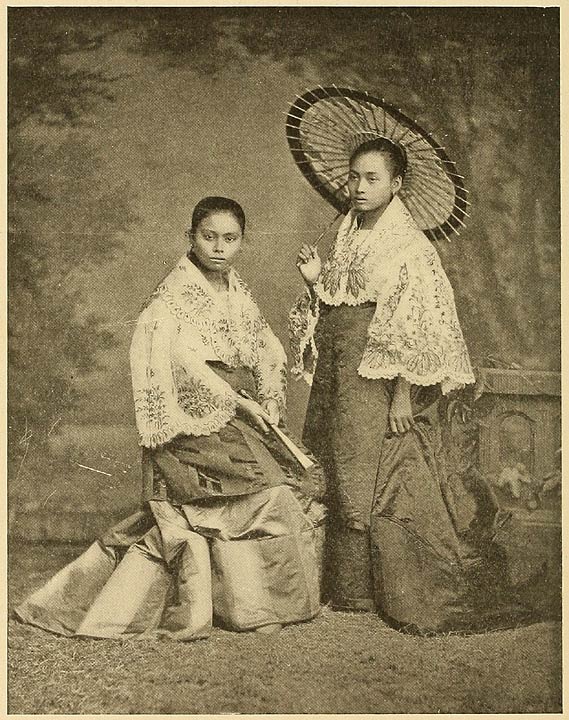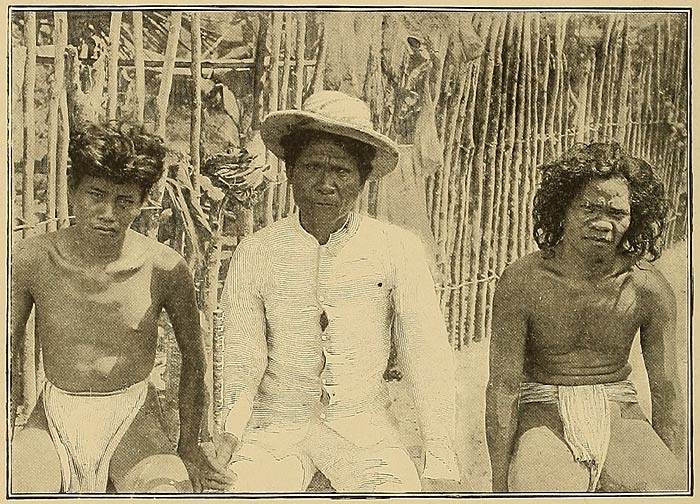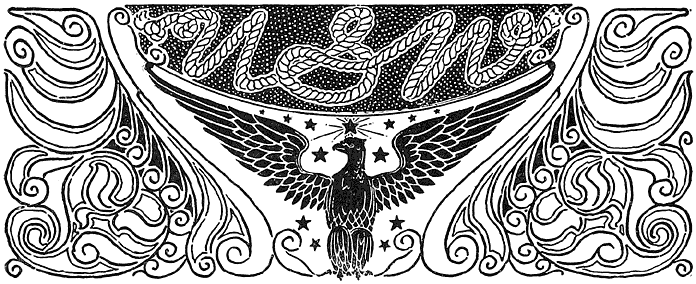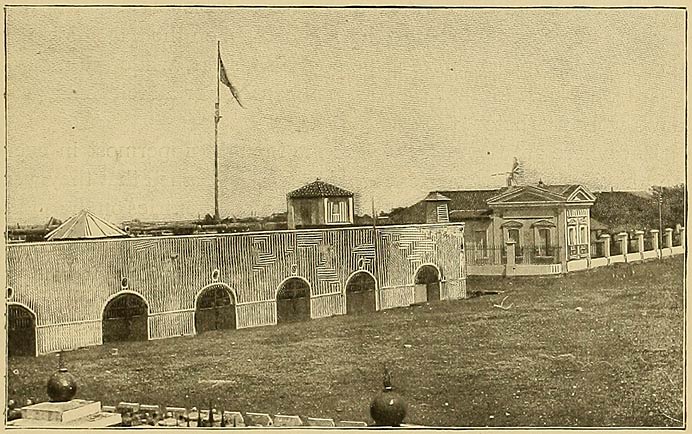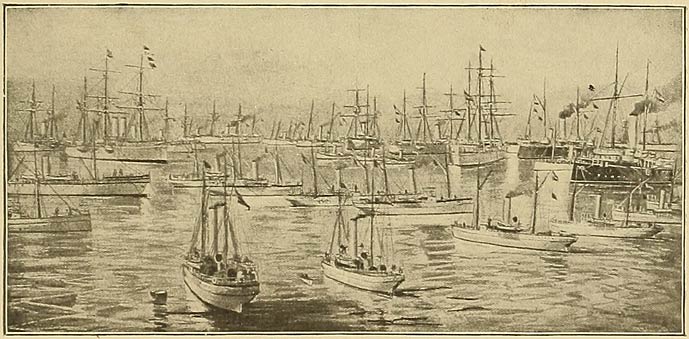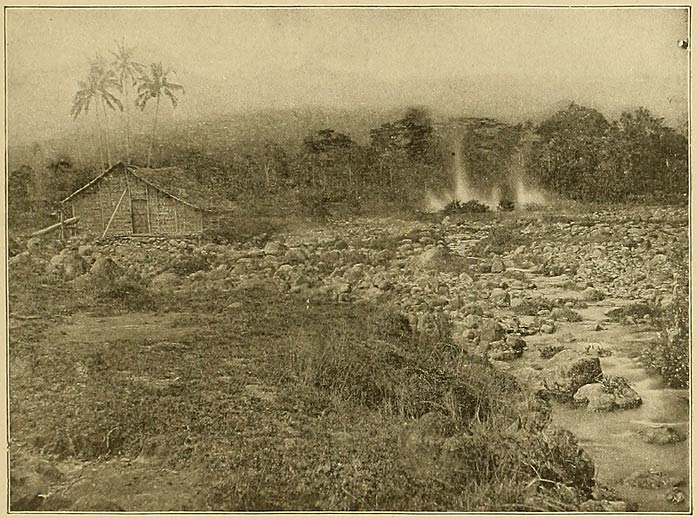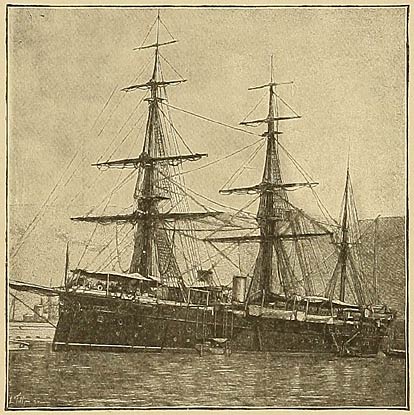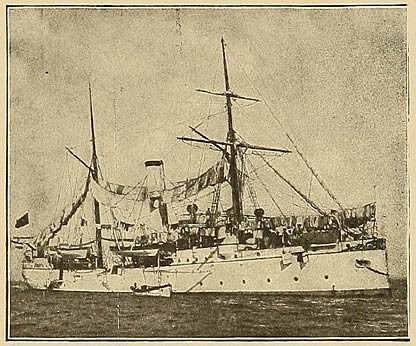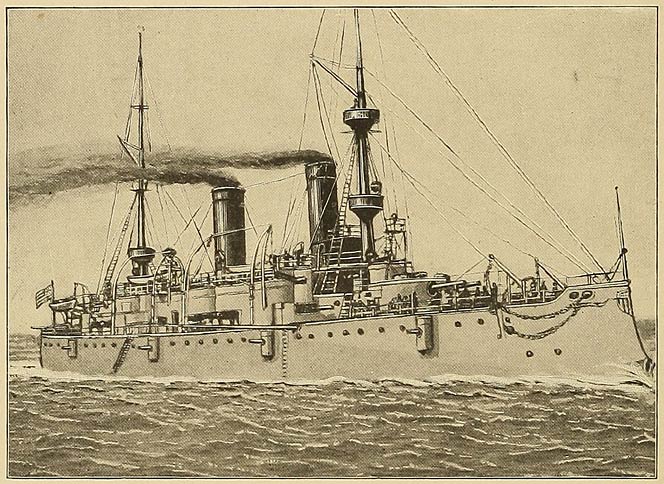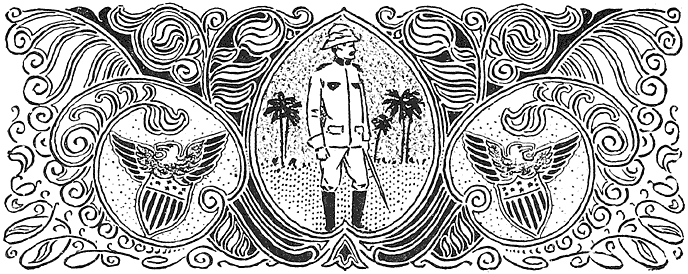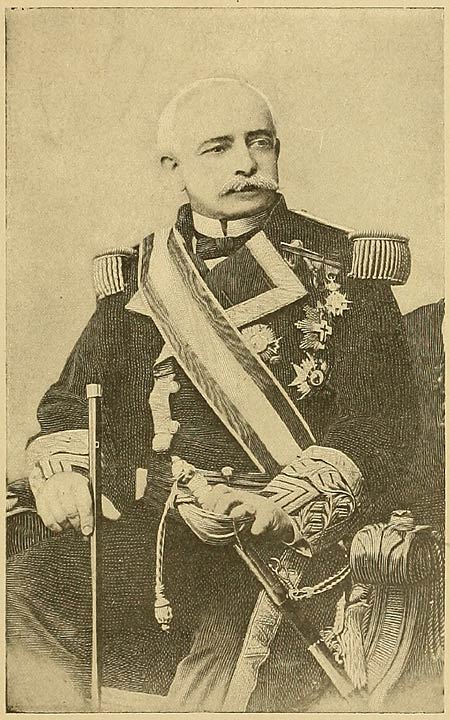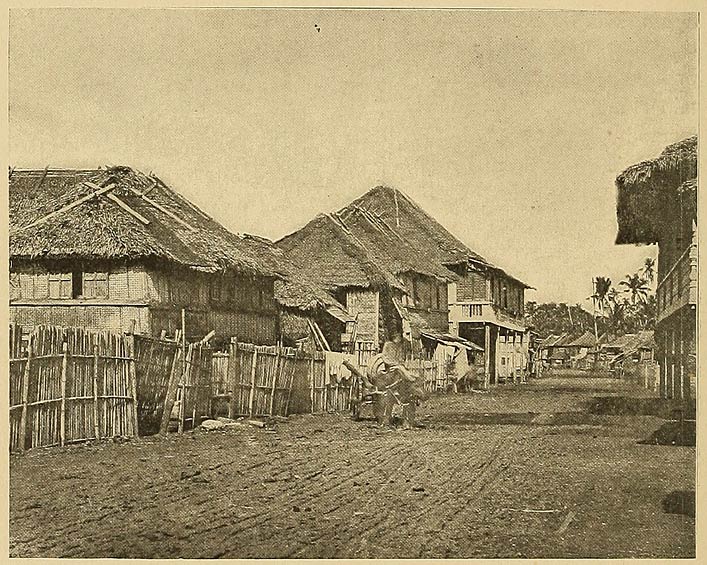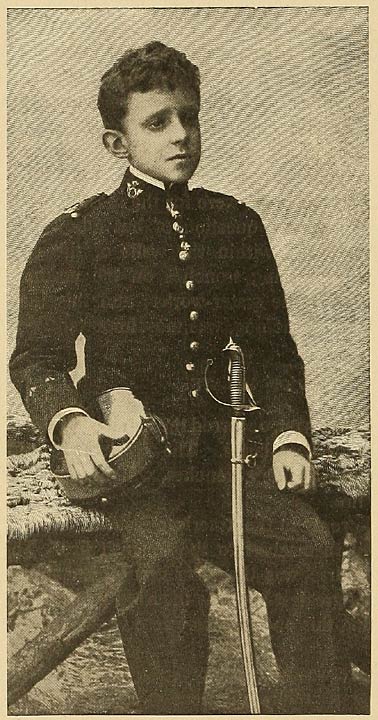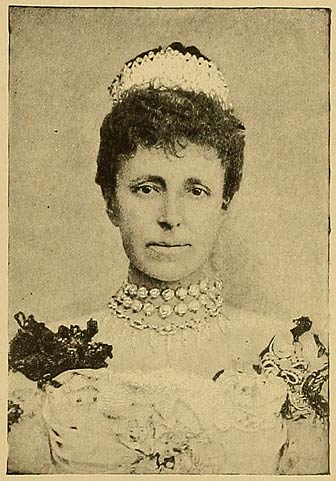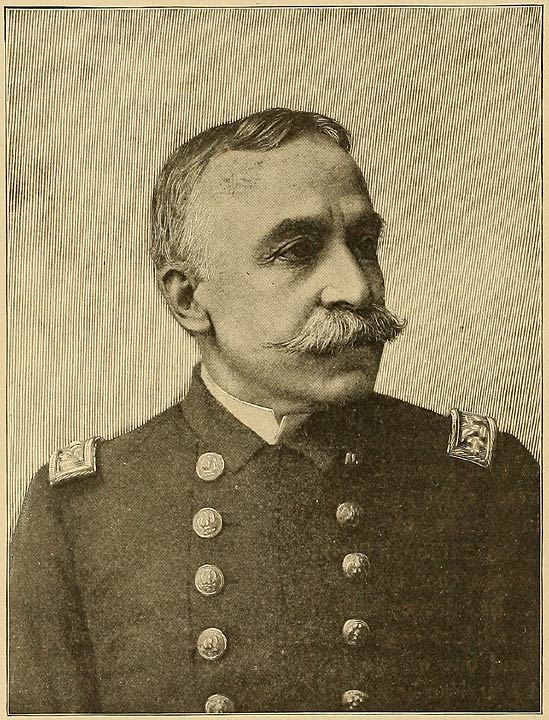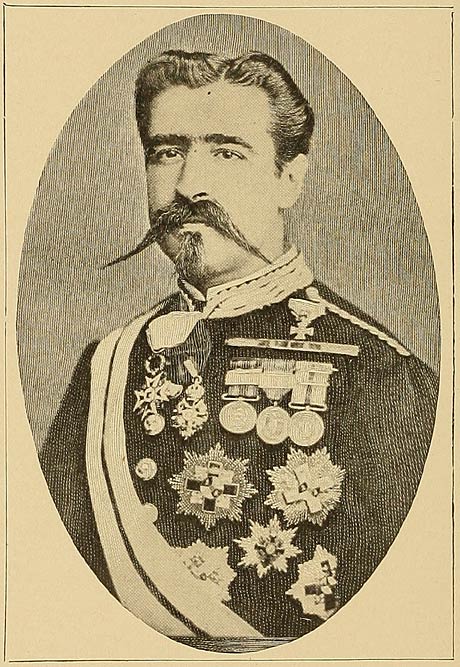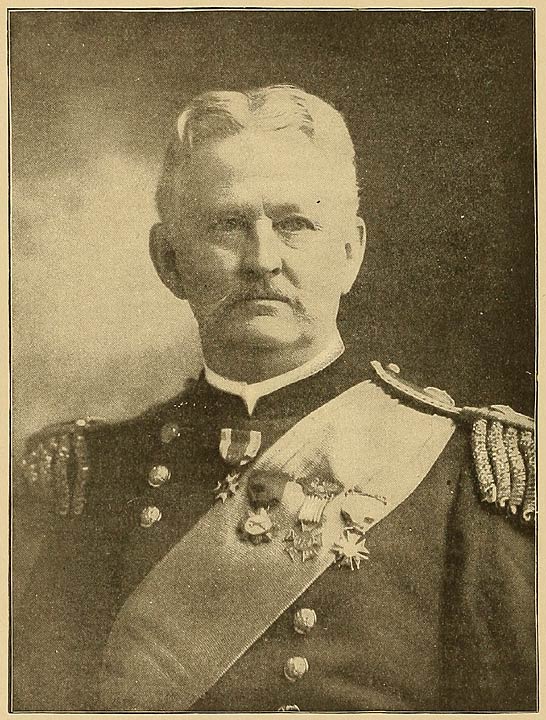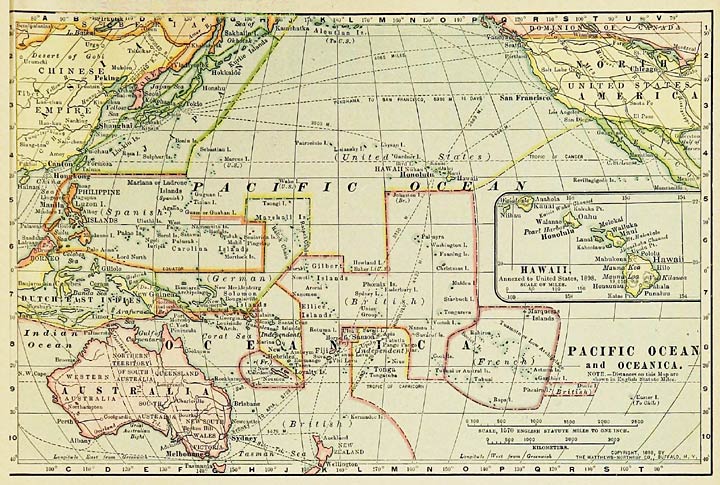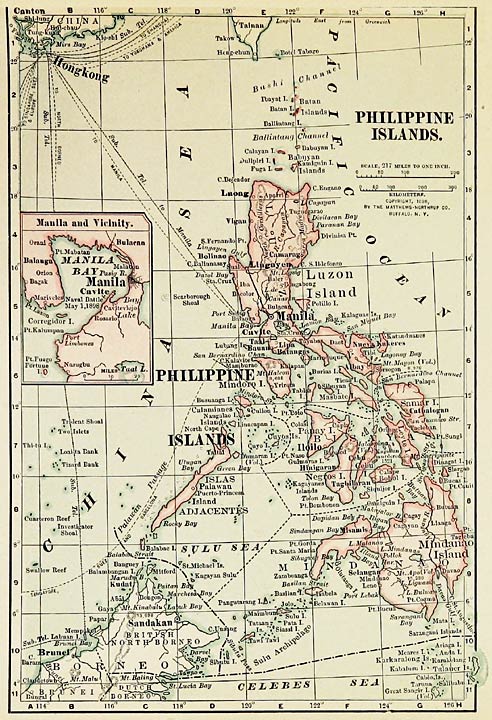
MDCCCXCIX
Continental Publishing Company
25 Park Place, New York
[8]
TO
Rear-Admiral Dewey,
WHOSE RECENT GREAT VICTORY OVER THE
SPANISH FLEET
HAS BEGUN A NEW ERA OF FREEDOM AND PROSPERITY
FOR MY COUNTRY,
AND TO
President McKinley,
IN WHOSE HAND LIES THE DESTINY OF
EIGHT MILLIONS OF FILIPINOS,
THIS BOOK IS DEDICATED. [11]
Contents.
Preface 23
Discovery and Conquest—Adventures of Juan Sebastian Elcano-Legaspi, the first Governor-General—Li-ma-hong, the Chinese Pirate—The Dutch appear upon the Scene—The Japanese, and the Martyred Saints 29–48
General Draper’s Expedition—The British demand an Indemnity—Intrigues against the British 49–56
The Spanish Colonial Government.
The Encomiendoros and the Alcaldes—The Present Division and Administration—The Taxes and what became of Them—Dilatory and Abortive Courts—A New Yorker’s Experience 57–70
Priesthood and the People—Conflicts between Church and State—Clashing among the Friars—The Monks opposed to Reform 71–79
The Various Tribes of the Philippines.
Character of the Natives—A Native Wedding—Dress and Manners—The Half-Breeds, or Mestizos—Savage Tribes in the Interior: the Aetas, or Negritos—The Gaddanes—The Igorrotes—The Igorrote-Chinese—The Tinguianes—The Chinese: Hated but Indispensable 80–106
Cross or Crescent?—The Sultan’s State—The Dreaded Juramentados—The Extent of Mohammedan Rule—Sulu Customs 107–118 [12]
The Old City—Binondo and the Suburbs—Educational and Charitable Institutions—The Cathedral and the Governor-General’s Palace—The Beautiful Luneta; the Sea Boulevard 119–137
Other Important Cities and Towns.
Iloilo; Capital of the Province of Panay—Cebú, a Mecca for many Filipinos—General Topography of the Islands 138–150
Natural Beauty of the Archipelago.
A Botanist’s Paradise—A Diadem of Island Gems—The Magnificence of Tropical Scenery—The Promise of the Future 151–158
The Morning Ceremonies—How the Afternoon is Spent—The Evening Procession—The Entertainment at Home—The Moro-Moro and the Fire-works 159–173
History of Commerce in the Philippines.
The Spanish Policy—The Treasure-Galleons—Disasters to Spanish Commerce—Other Nations enter into Competition—Fraud and Speculation—The Merchants of Cádiz—Royal Restrictions on Trade 174–187
Commerce During the Present Century.
The Royal Company—The Restrictions are gradually Abolished—Vexatious Duties on Foreign Imports—Duties made Uniform—Spanish Opposition to Foreign Trade—Trade with the Natives—The Decline of American Trade—Recent Measures and Statistics—Bad Results of Spanish Rule 188–198
Agriculture: The Sugar and Rice Crops.
Agriculture, the Chief Industry—The Principal Products of the Colony—The Cultivation of Sugar-cane—Methods of Manufacturing Sugar—The Several Systems of Labor—The Rice Crop—Methods of Rice-Cultivation—Primitive Machines, and Importance of the Rice Crop 199–213 [13]
Description of the Abacá—The Process of Manufacture—Some Facts about Hemp-growing—Difficulties with Native Labor—Tricks of the Natives—Competition with Other Lands—Experience of a Planter—What the Hemp is used for 214–226
The Cultivation of Tobacco, a State Monopoly—Oppressive Conditions in Luzon—How Speculators take Advantage of the Natives—The Quality of Manila Tobacco—Methods of Preparing the Tobacco Leaf—Smoking, a Universal Habit 227–236
The Origin of the Industry—Indifference of Coffee-planters—Speculation in Coffee—Methods of Cultivation—Harsh Methods of the Government 237–242
Betel-Nut, Grain, and Fruit-Growing.
The Areca Palm and the Betel Nut—The Nipa Palm and Nipa Wine—Various Fruits of the Islands—Cereals and Vegetables—Cotton and Indigo Planting—The Cocoa Industry—The Traffic in Birds’ Nests 243–250
The Huge Forests—The Bamboo Plant and its Uses—The Bejuco Rope—The Useful Cocoanut Palm—Oppressive Regulations of the Government—The Early Missionaries Beneficial to the Natives 251–259
Mineral Wealth of the Islands.
Early Search for Gold—The Mining Laws and Methods of the Colony—Where the Precious Metal is Found—The Whole Country a Virgin Mine—Precious Stones and Iron—Peculiar Method of Mining Copper—Other Materials and the Coal Fields, 260–272 [14]
The Useful Buffalo, and Other Domestic Animals—Reptiles, Bats, and Insects—A Field for the Sportsman—The Locust Scourge—The Chief Nuisances: Mosquitoes and Ants 273–283
Struggle of the Filipinos for Liberty.
Early Insurrections Against the Spaniards—The Burgos Revolt—The Present Rebellion—The Katipunan—The Black Hole of Manila—The Forbearance of the Natives—The Rebel Army—The Tagál Republic Proclaimed—Treachery of the Spaniards—Dr José Rizal and his wife Josephine—Execution of Rizal—The Philippine Joan of Arc—Rizal’s Farewell Poem—Aguinaldo Confers with Admiral Dewey—Aguinaldo as Dictator: His Proclamations—Triumphant Progress of the Rebels—The Spaniards Fortify Manila—Sketch of Aguinaldo 284–309
The White Squadron—Declaration of War, and Journey to the Philippines—Luzon Sighted, and Preparations for Battle—The Fleet Sails by Corregidor—First Shot of the War—The Spanish Fleet is Sighted—Dewey Attacks the Enemy—The Fate of the Reina Cristina—The Commodore Pipes all Hands to Breakfast—The Americans Renew the Battle—The Yankees are Victorious 310–325
Merritt and the Expedition—The Battle of Malate—Capture of Manila—Capitulation of the Philippines—Awaiting the Peace Commission—Instructions to Merritt 326–342 [15]
Illustrations.
- Page.
- The Fortifications of Old Manila 30
- A Glimpse of the Old Canal 35
- In the Batangas Province 36
- In the Province of Pangasinan 39
- San Augustine Church, in Old Manila 43
- A Suburb of Old Manila 45
- The Abandoned Aqueduct 47
- Tower of Defense, Church, and Priest’s House 50
- A Native Village in the foot-hills: Old Manila 52
- A Bamboo House in Pampanga Province 54
- A Street Scene in Albay 59
- Children of a Gobernadorcillo 61
- Along the Escolta: Principal Business Street in New Manila 63
- A Business Street in Old Manila 65
- In the Lumber District 68
- Throne Room of the Archbishop’s Palace 72
- The Famous Shrine of Antipolo 74
- A Parish Priest 77
- Negritos of Pampanga 81
- The Igorrotes 82
- Interior of a Native Hut 85
- A High-born Filipina—upper garment of costly Piña 86
- The Fashionable Church and the Village of Majayjay 89
- Author in Silken Suit: kind worn by high-class natives 90
- Full-blooded Native Girl in Reception Attire 92
- Negritos Enjoying a Primitive Sun-shade 95
- Volcano of Albay—a near view 97
- A Body-guard of Igorrotes 99[16]
- A Native Restaurant, in Binondo 101
- Chinese Merchants on their way to the Joss House 103
- A Chinese Chocolate-maker 105
- Chieftains of Sulu 108
- Sulu Warriors in Fighting Attitude 110
- A Bamboo Thicket in Sulu 112
- The Devil’s Bridge, in Wild Laguna 114
- A Jungle in Luzon 116
- The Magnificent New Cathedral in Old Manila, and Ruins of the Old Cathedral, Destroyed by Earthquake 1863 121
- Commercial House of Russell & Sturgis; First American Merchants; Later, Lala’s Hotel 123
- “Home, Sweet Home,” as the Filipino knows it 125
- Balcony of Manila Jockey Club, overlooking Pandacan 126
- The Nactajan Mess: Manila Jockey Club 128
- Church of San Francisco, and the Old City Walls 130
- A Rear View of the Governor-General’s Palace 132
- A Water-girl 133
- The Garrote, Manila Method of Capital Punishment 135
- The Beautiful Luneta 136
- At the Port of Iloilo 139
- Interior of a House Destroyed by an Earthquake 140
- Open-air View of an Earthquake’s Violence 142
- A Milkwoman of Calamba 144
- A Native Hut in the Interior 147
- Hot Water Springs, Albay; and Mayon Volcano 149
- The Once-beautiful Botanical Gardens 152
- Malecon Promenade, along Manila Bay 154
- A Mestiza Flower-girl 157
- A Village Feast 160
- A Fashionable Church in Majayjay, Near Manila 162
- Home of a well-to-do Manila Merchant 164
- Cock-fighting: the Supreme Enjoyment 166
- Interior of the Cathedral, where all Processions Begin And End 168
- Square of Cervantes: Fashionable Quarter of Manila 170[17]
- A Scene From the Moro-Moro Play 172
- The Puente de España: Stone Bridge, Replacing the Old Wooden One 175
- Square of Cervantes—New Manila 178
- Tondo: The Ancient Quarter of Native Fishermen 180
- Water-Carriers and Fruit-Vender 182
- Ancient and Present Method of Washing Clothes 184
- A Procession of Natives Carrying Fish 186
- A Mestizo Merchant 189
- The Escolta: Looking Toward Santa Cruz 191
- A Milkman on his Rounds 193
- A Village of Santa Ana 195
- A Water-Carrier and Customer 196
- Weaving the Beautiful Piña Cloth 200
- Women Employed in a Piña Shop 202
- Natives Preparing the Ground for Sugar-Cane Planting 204
- Old-fashioned Process of Drying Black Sugar 206
- Cane-stalk Yard, Tanduay; Drying Crushed Cane for Fuel 208
- Native Women Hulling Rice 211
- Mayon Volcano, Albay; in the Hemp-producing District 215
- A Hemp Warehouse, Manila 217
- A Hemp Press at a Busy Hour 219
- A Chinese Hemp Merchant in Gala Attire 221
- A Wealthy Spanish Merchant of Albay 223
- A Bamboo Bridge in Albay 225
- A Cigar and Cigarette Factory in Manila 228
- A View of the Suspension Bridge, Manila; over the Pasig River 230
- Native Girls Making Manila Cheroots 233
- Spanish Luxury in the Old Days 234
- District of Taäl: in the Batangas Province 238
- The Useful Buffalo: for all Hauling Purposes 240
- A Betel-Nut Gatherer of Luzon 244
- A Typical Native Fruit-Girl 246
- “La Belle Chocolatière” of Luzon 248
- Shifting Lumber in a Forest of Tayabas 252[18]
- Natives Transporting Lumber to the Coast 254
- The Young Proprietor of a Cocoanut Grove Gathering Tuba 256
- A Wealthy Mestiza of the Upper Class 258
- A Group of Tagals Employed by a Mining Company 262
- Another Glimpse of the Great Stone Bridge 264
- La Laguna Lake; the Neighborhood of a Gold Discovery 266
- A Country House in Tanguet Village 268
- House of Native Coal-Laborer of Cebú 270
- A Buffalo in Harness; Harrowing the Soil 274
- Grand Stand, Santa Mesa, where the Pony Races are run 276
- At the National Sport; Just Before the Contest 278
- A Wayside Restaurant 281
- A Native Servant-Girl 282
- Buffalo Transporting Lumber in Pampanga 285
- Enterprising Sugar Refineries, Tanduay 287
- La Bella Filipina in Troubadour Costume 290
- Foreigners at Tiffin in Manila 292
- Dr José Rizal, Martyred Leader of the Present Insurrection 295
- An Execution of Insurgent Chiefs on the Luneta 296
- Entrance of the River Pasig, Manila 299
- The President of the United States and His War-Cabinet 300
- Andres Bonifacio, sometime Rebel President of so-called Tagal Republic 303
- Emilio Aguinaldo 305
- Native Women: their Upper Garment—Pañuelo—of Piña 306
- Types of the Tagbanua Tribe 308
- A Battery at the Corner of the Old Fortifications, Manila; Facing the Bay 313
- The Spanish Fleet as it Appeared in the Philippine Waters 315
- The Hot Springs of Luzon Province 317
- The Reina Cristina, Flagship of Admiral Montojo 318
- The Isla de Cuba; To it the Spanish Flag was Transferred 322
- The Olympia; Admiral Dewey’s Flagship 324
- Admiral Montojo, Commander of Spanish Fleet at Manila 327
- Cavité; a Rebel Stronghold, Noted for its Arsenal 328
- Alfonzo XIII., the Boy King of Spain 330[19]
- The Queen-Regent of Spain 333
- Rear-Admiral George Dewey 334
- Don Basilo Augustine, Spanish Captain-General of the Philippine Islands 338
- General Wesley Merritt, American Commander of Military Forces at Manila 340

Introduction.
The absolute present necessity for accurate information by the people of the United States respecting the Philippines has been met in no more satisfactory manner than by this book.
The author, Mr. Ramon Reyes Lala, is a Filipino and was born in Manila. His collegiate education was completed in England and Switzerland. A long sojourn in Europe has instructed him in European thought, tendencies, and methods. He has lived in the United States for many years, and has become, by naturalization, a citizen of this country.
He collected the historical material for this work largely from the Spanish archives in Manila before the last rising of the people of Luzon in rebellion against Spain. His mastery of the English language is that of the thorough scholar. His qualifications for his work are those of the student, trained by many studies. He possesses by nativity the gift, incommunicable to any alien, of giving a true color and duly proportioned form to his delineations of his own people. These endowments have enabled him to produce a work of striking and permanent value.
The most meritorious feature of Mr. Lala’s book is unquestionably its impartiality of statement and judgment. This is particularly apparent in his descriptions of the moral and intellectual character of his countrymen. No defect is extenuated, nor is there any patriotic exaggeration of merits. The capacities and limitations of the Filipinos are plainly and photographically depicted. The difficulties and the facilities of their political control by the United States are weighed in a just balance by the reader himself in considering these portrayals of national character. [22]
This colorless truth of statement appears not alone in Mr. Lala’s special descriptions of the character of his people. It is also manifest, as it is incidentally displayed, in his many expositions of the systems and methods of labor, of social usages, of domestic life, of civil administration, of military capacity, of popular amusements and of religious faith. The result is that he has communicated to the reader an unusually distinct conception of national and ethnic character. This is always a very difficult task. The most graphic portrayal in this respect most commonly enables the reader merely to perceive indistinctly, but not clearly to see.
The book is of a most practical character. Its statements of commercial history and methods, and of past and present business and industrial conditions, are most satisfactory. Such an exposition is at this time most indispensably needed. Everybody knows, in a general way, that the Philippine Islands produce sugar, rice, hemp, tobacco, coffee, and many other agricultural staples, and that they are rich in minerals and valuable woods. But heretofore it has been very difficult to obtain specific information upon these subjects. Mr. Lala has given this information. The practical man, the farmer, the manufacturer, the merchant, the miner is here informed concerning resources, methods, prices, labor, wages, profits, and roads. While this information is not technical, it is instructively full and is evidently reliable.
The descriptions of the processes of cultivating and preparing hemp, sugar, coffee, rice, and tobacco, and the suggestions of the ways by which these methods can be easily improved, and the products made more profitable, are, in every way, most satisfactory.
The Philippines began to come under European control with the administration of Legaspi, the first Governor-General, in 1565, long before the English had colonized any portion of North America.
For about three hundred and fifty years the Spanish system has been in contrast with that of every other colonizing nation. It has been worse than the worst of any of these. While there is no elaborate contrast of these systems in Mr. Lala’s book, he nevertheless depicts so thoroughly the manifold and inveterate rapacity, cruelty, corruption, and imbecility of Spanish colonial administration, [23]that he also discloses the vast possibilities of the better contrasted systems.
No war was ever yet waged in the interests of humanity, as the war against Spain unquestionably was, that did not produce consequences entirely unforeseen at its beginning. This truth was never more convincingly confirmed than by the war just ended. The United States demanded the evacuation by Spain of Cuba and Cuban waters. Compliance by Spain would have limited the consequences to the evacuation. She did not comply. She chose the arbitrament of war, and the result was her extirpation from her insular possessions in the West Indies and the Philippines.
This providential and revolutionary event imposed upon the United States duties unforeseen, but none the less imperious. As to the Philippines, those duties are complicated by the irresistible tendencies which seem to make certain the dismemberment of China, and the subjection of that immemorial empire to all the influences of Western civilization. This is an event not inferior in importance to the discovery of America by Columbus, and the interest of the United States in its consequences is of incalculable importance. With this interest its relations to the Philippines is inseparably connected, and those relations present for consideration policies which disenchant the situation of all idealism and make it intensely practical. To this possible result the war waged against the United States by Aguinaldo and his followers has decisively contributed.
But, in any event, whatever the relations of the United States to the Philippines may finally become, the book of Mr. Lala will undoubtedly influence and assist the considerate judgment of those whose duty shall call them to determine the momentous questions which are now enforcing themselves for solution upon the attention of the American people.

Washington, March 22d, 1899.
[Cushman Kellogg Davis, U. S. Senate, Minnesota, 1887 to ——; Chairman Committee on Foreign Relations; Member of the Commission that met at Paris, September 1898, to arrange terms of peace between the United States and Spain.] [25]

Preface.
About twenty years ago, when a student at St. John’s College, London, I was frequently asked by people I met in society for information regarding the Philippines and the Filipinos. Many also, who showed considerable interest, and who wished, for various reasons, to carry their investigations further, complained that there was in English no good book on the subject. Afterward, when I continued my studies at a French college in Neûchatel, Switzerland, I met with many similar inquiries, and here too in America I found demand for a comprehensive, reliable work upon my country.
But it was not until I had traveled considerably through Europe, studying the history of the various States and peoples, that the idea of writing a history of my own fatherland occurred to me. It was mortifying then to think that the glories of my native land were no better known. Accordingly, I resolved to become the chronicler, and I began at once to collect material for a work on the Philippines, that should, I trusted, be deemed a permanent contribution to historical literature.
Upon my return to Manila from Europe, I immediately began a study of the Colonial archives in the office of the Governor-General. From these I gathered many valuable data about the early history of the colony, and also much information that would be locked to the curious traveler. And on account of my knowledge of Spanish, and because of my friendship with the Governor-General Moriones, I was enabled to do this thoroughly. Thus I gradually laid the foundation for the present work. [26]
When, a few years later,—in 1887,—because of my sympathy with the rising cause of the insurgents, Spanish tyrants banished me from my country and my kindred, I carried away all the manuscripts I had already written, resolved to finish the task I had set before me amid a more congenial environment.
I came to the United States. Of this country I, in due time, became a citizen. However, I kept up my relations with friends in Manila; for I still felt an interest in the fate of my native land. Though I have since revisited the Orient, I preferred to retain my American citizenship, rather than again put myself under the iron yoke of Spain. I have, nevertheless, kept pace with the march of events in the colony, and had, indeed, about completed my history when Dewey’s grand victory denoted a new era for the Filipinos, and, hence, made the addition of several chapters necessary. I have thus added much of supreme interest to Americans; bringing the book to the capture of Manila by the American forces.
My acquaintance with the leading insurgents,—Rizal, Aguinaldo, Agoncillo, the Lunas, and others,—has also enabled me to speak with authority about them and the cause for which they have fought.
In writing this work I have consulted all previous historians, the old Spanish chroniclers, Gaspar de San Agustin, Juan de la Concepcion, Martinez Zuñiga, Bowring, Foreman, and various treatises, anthropological and historical, in French, Spanish, and English.
To all these writers I am indebted for many valuable facts.
It has been my aim to give—rather than a long, detailed account—a concise, but true, comprehensive, and interesting history of the Philippine Islands; one, too, covering every phase of the subject, and giving also every important fact.
And my animating spirit of loyalty for my own countrymen makes me feel that I cannot more clearly and fully manifest my affection for them and my native land than by writing this book.
Many of the pictures are photographs taken by myself. The rest were selected from a great number of others, that were accessible, as being most typical of Philippine life and scenery.
The student of history, and he that would learn something about the customs of the people, and the natural resources of the country, [27]may, I trust, find the perusal of this work not without profit and interest.
I desire to attest here my gratitude for the many courtesies shown me, and for the hearty manner in which I have been received, in this great, free country.
Everywhere it was the same.
And I would say to all loyal, ardent Filipinos, that I believe that they eventually will not regret the day when Commodore Dewey sundered the galling chains of Spanish dominance, and when General Merritt, later, hoisted the Stars and Stripes over the Archipelago.
They will, rather, most surely live to recognize and appreciate the unsullied manifold advantages and benefits incident to American occupation and to a close contact with this honest, vigorous type of manhood.
The Author.
New York December, 1898.
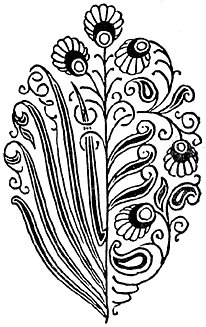
[29]



